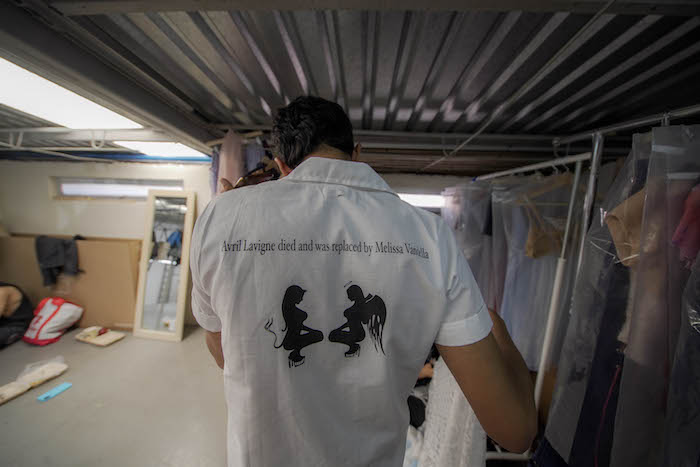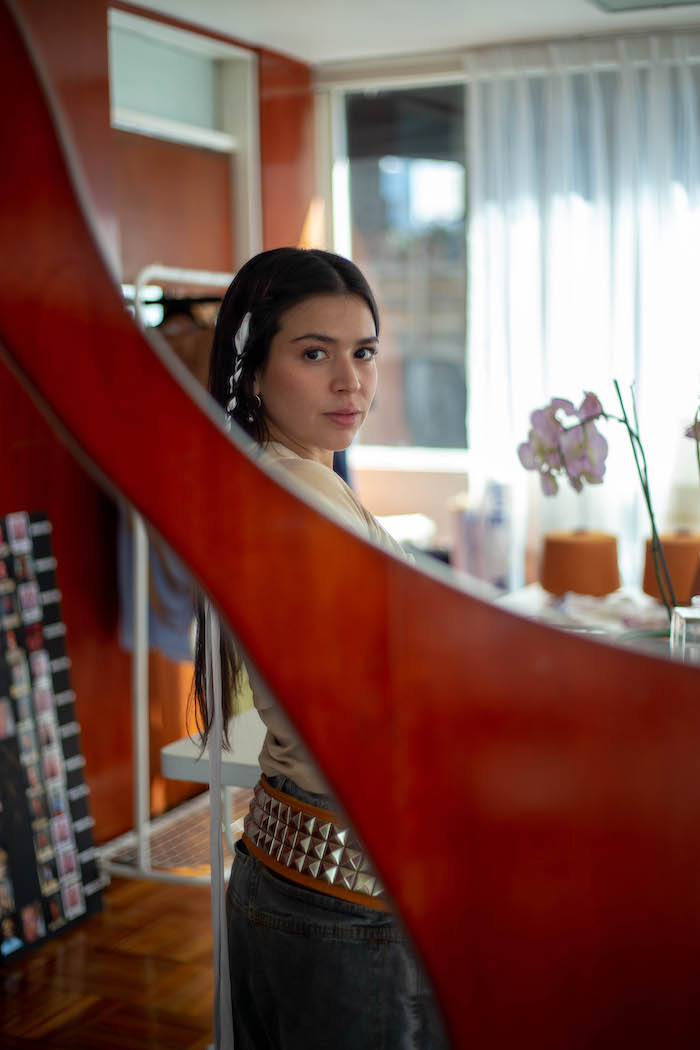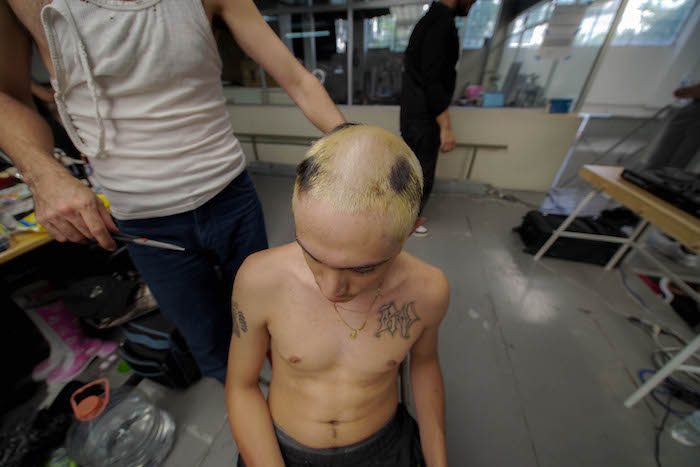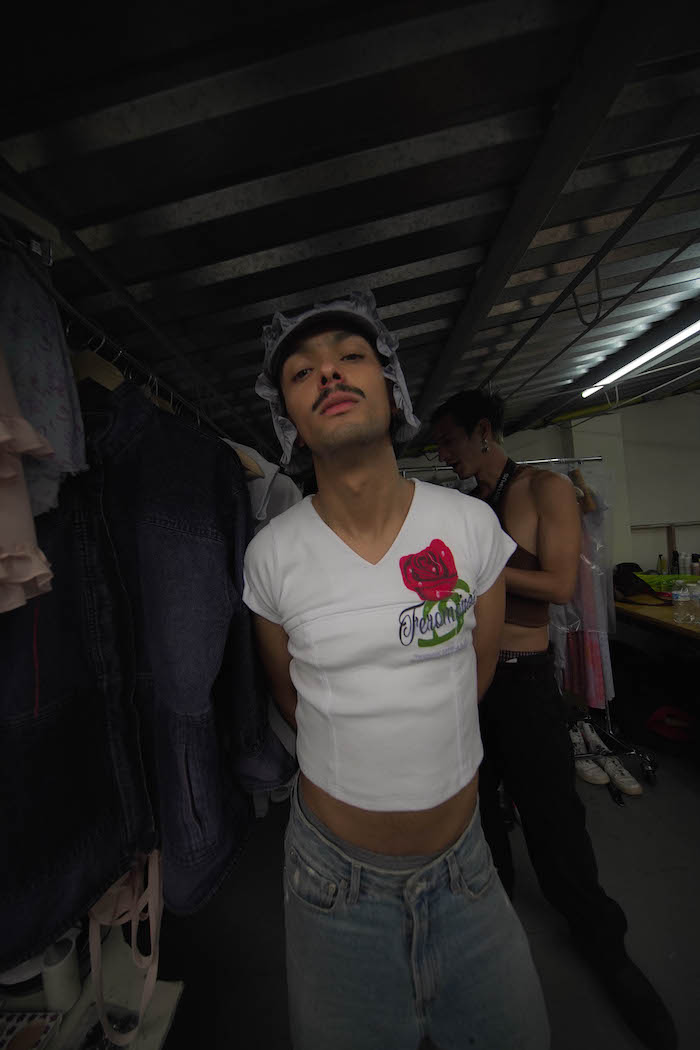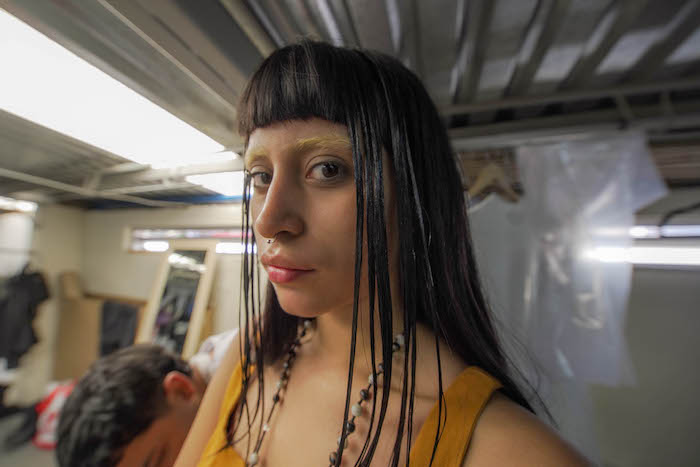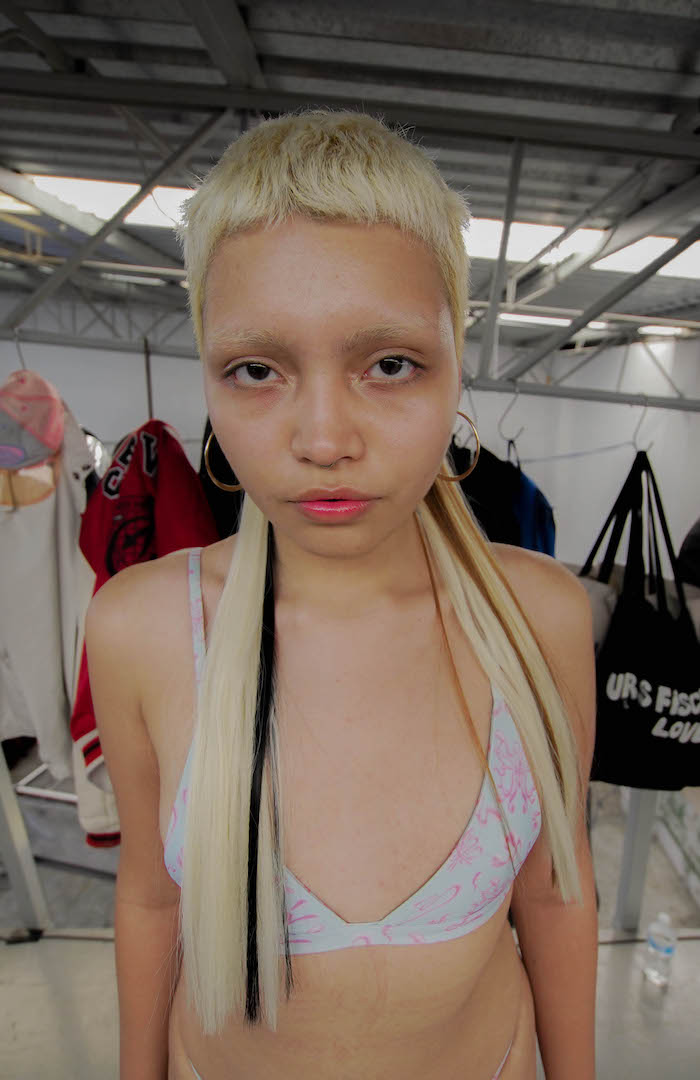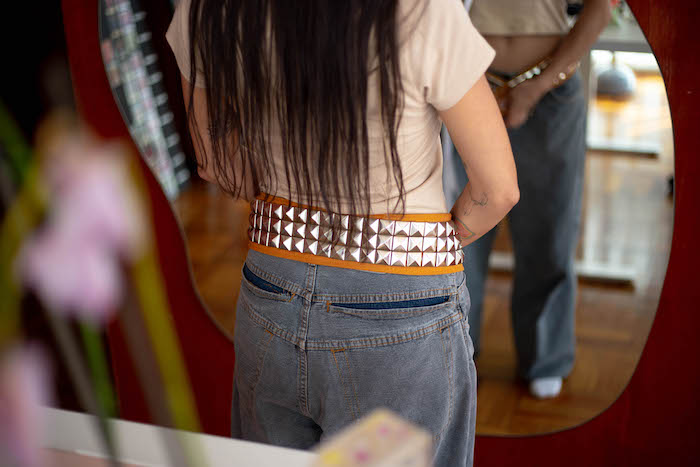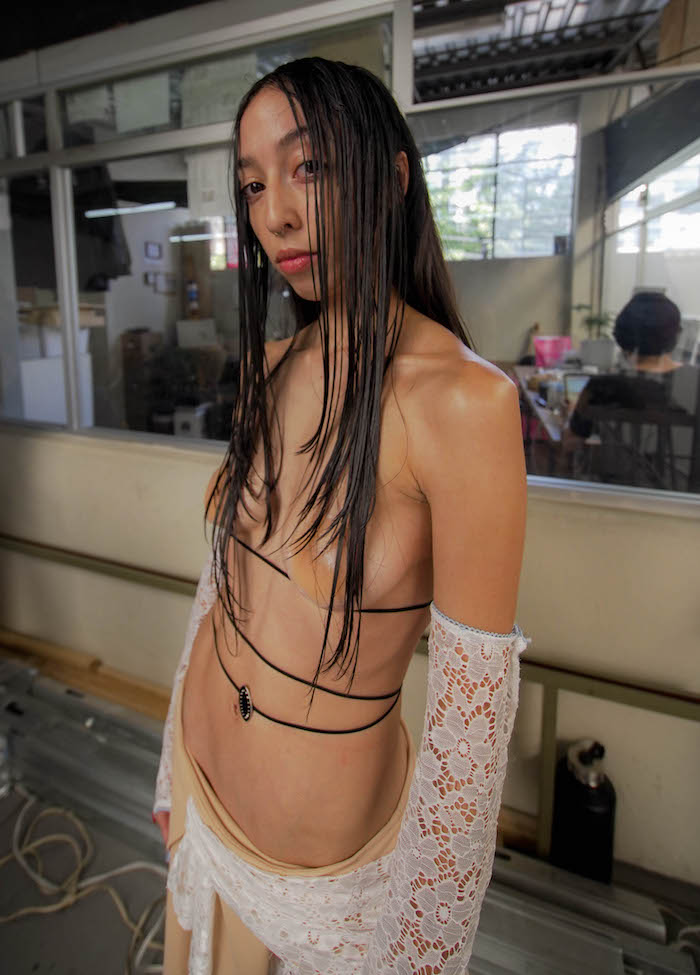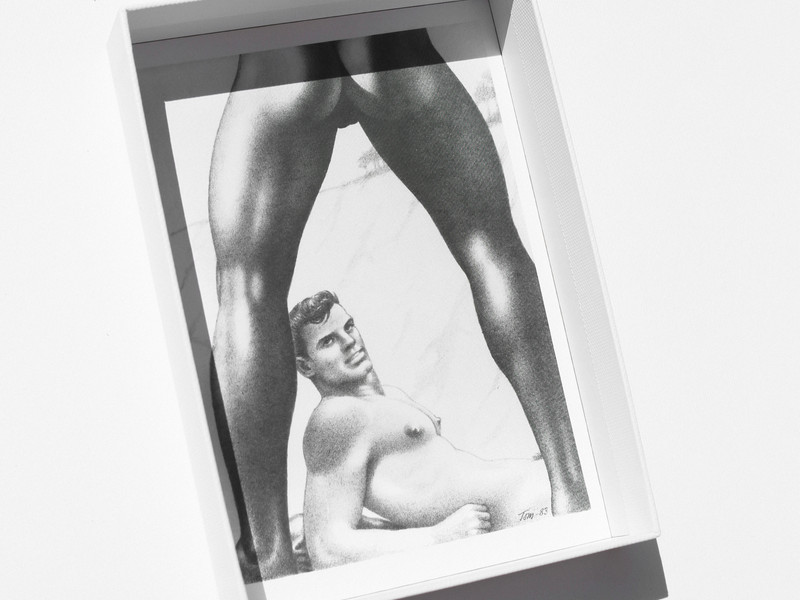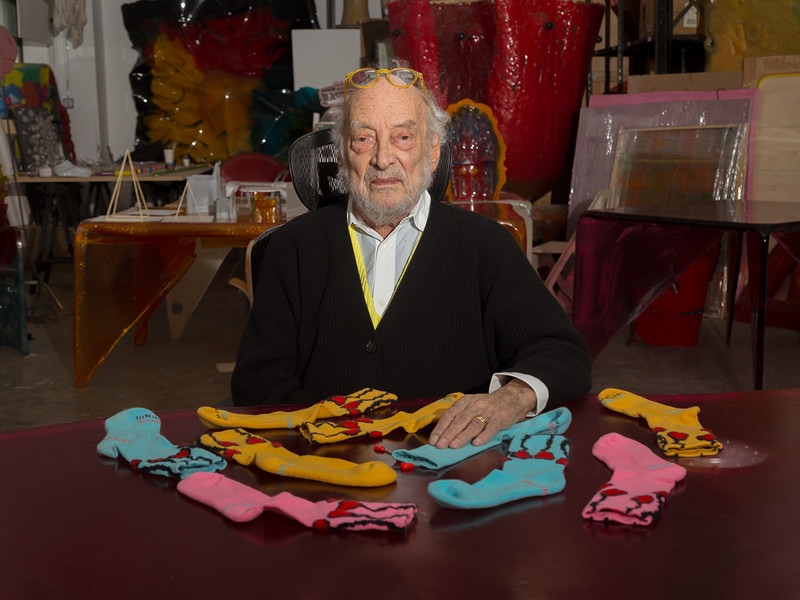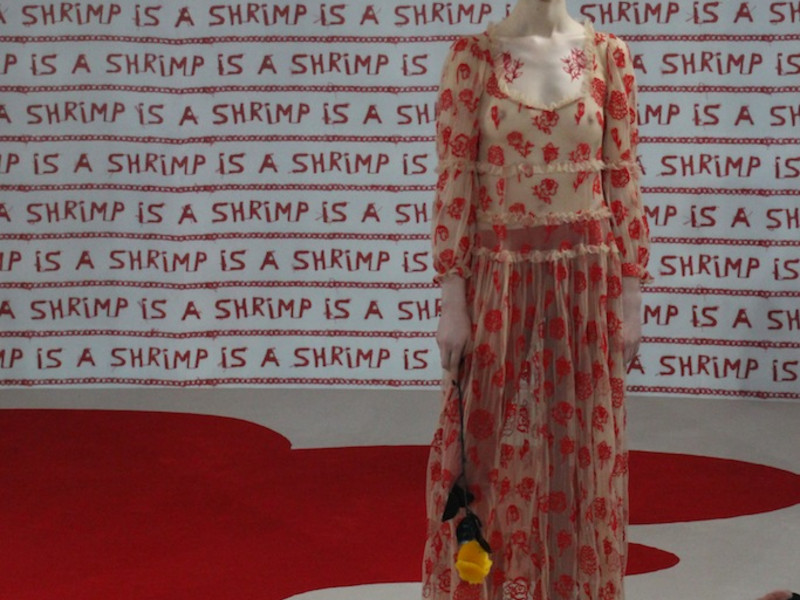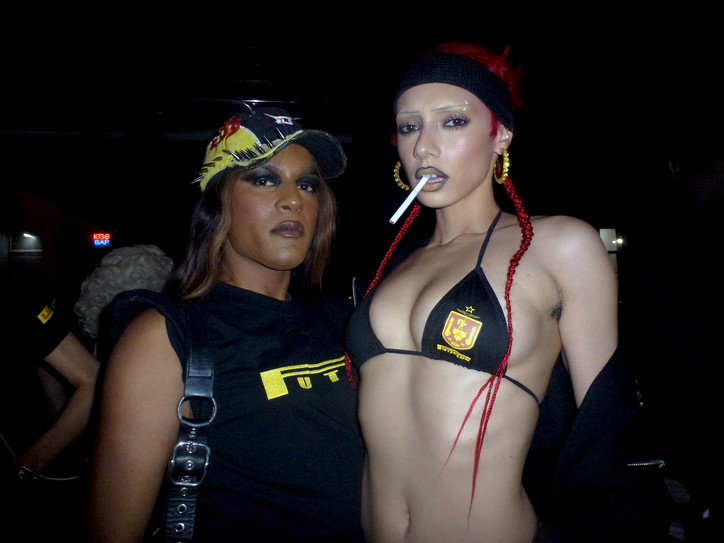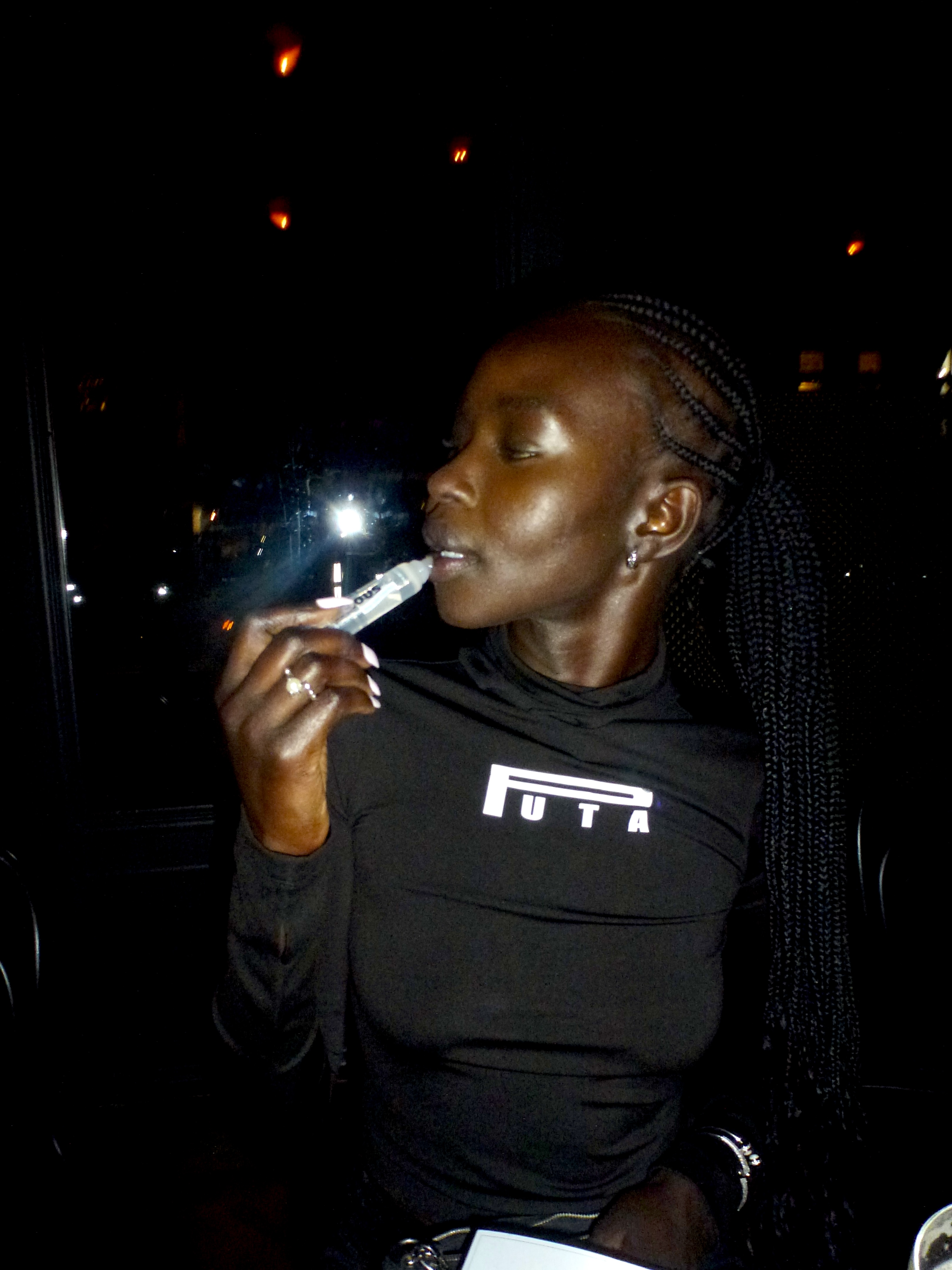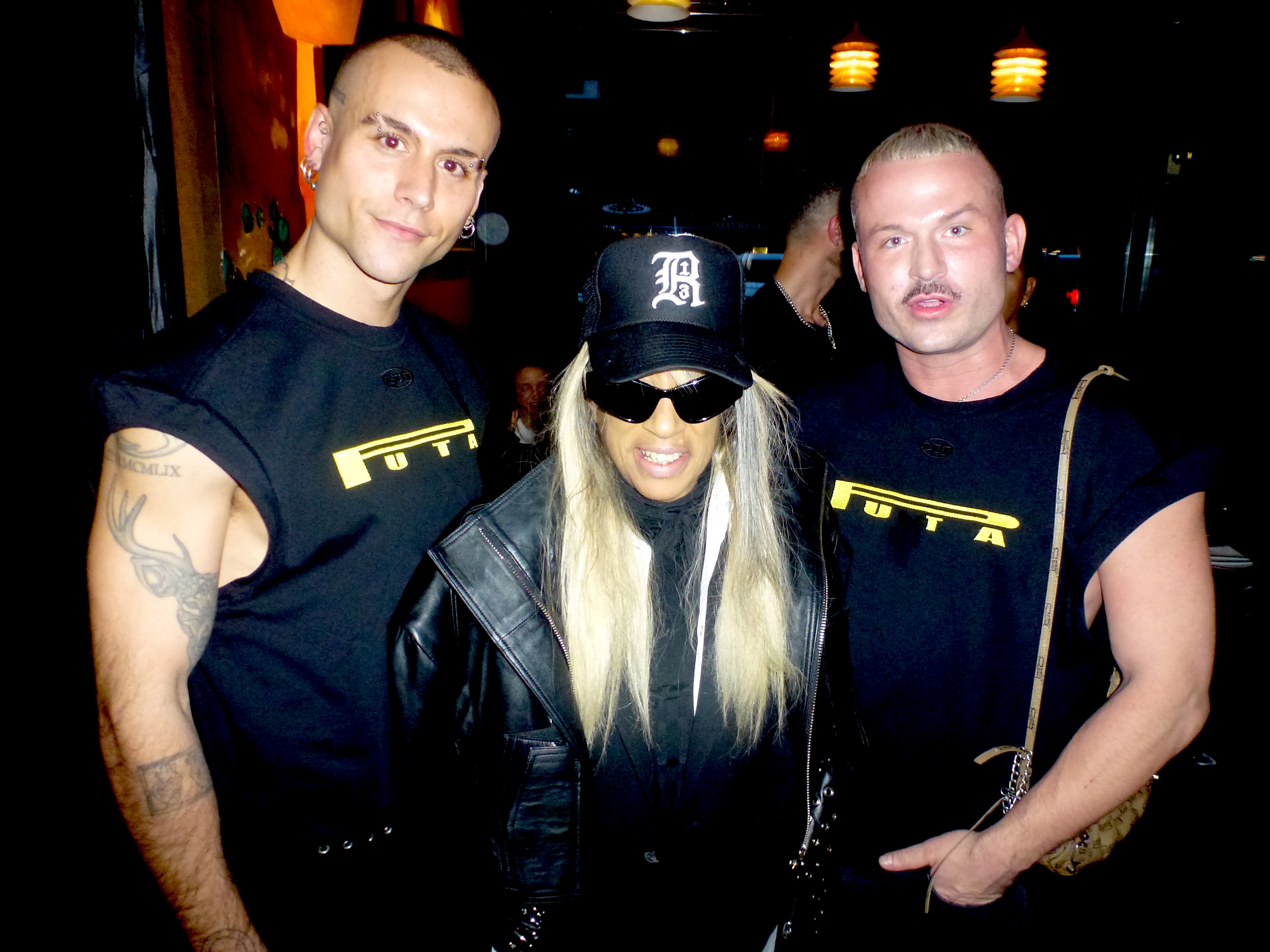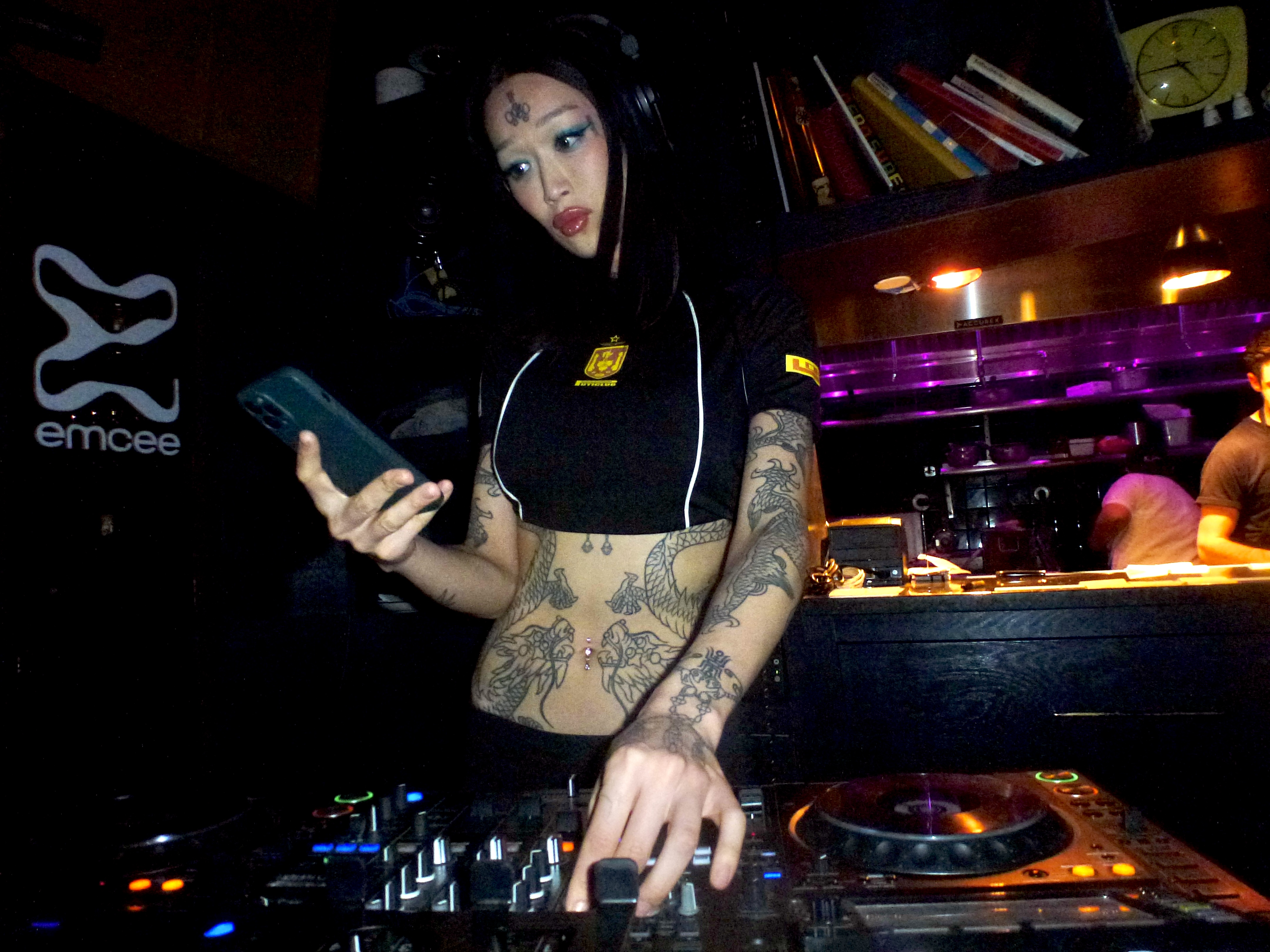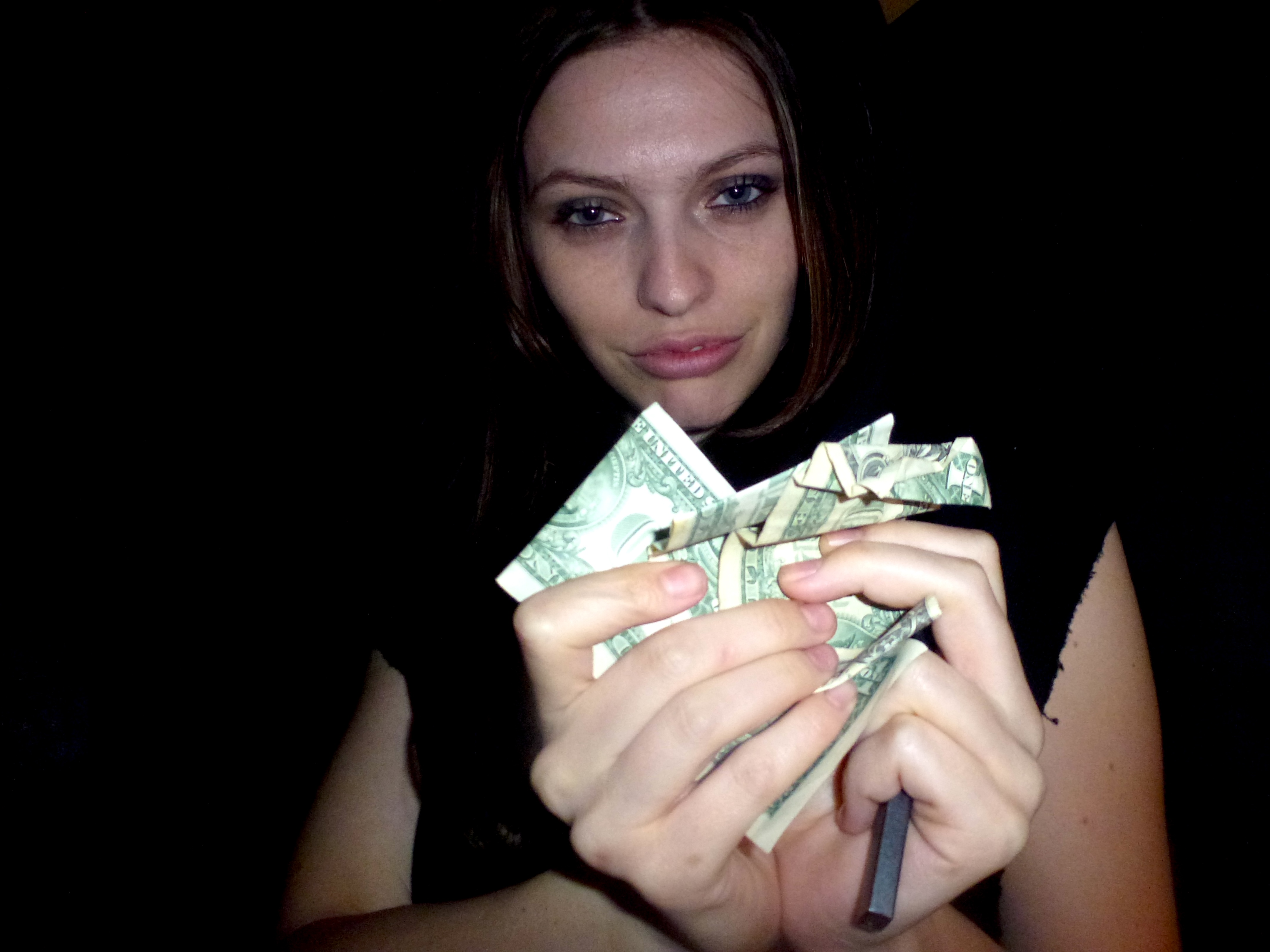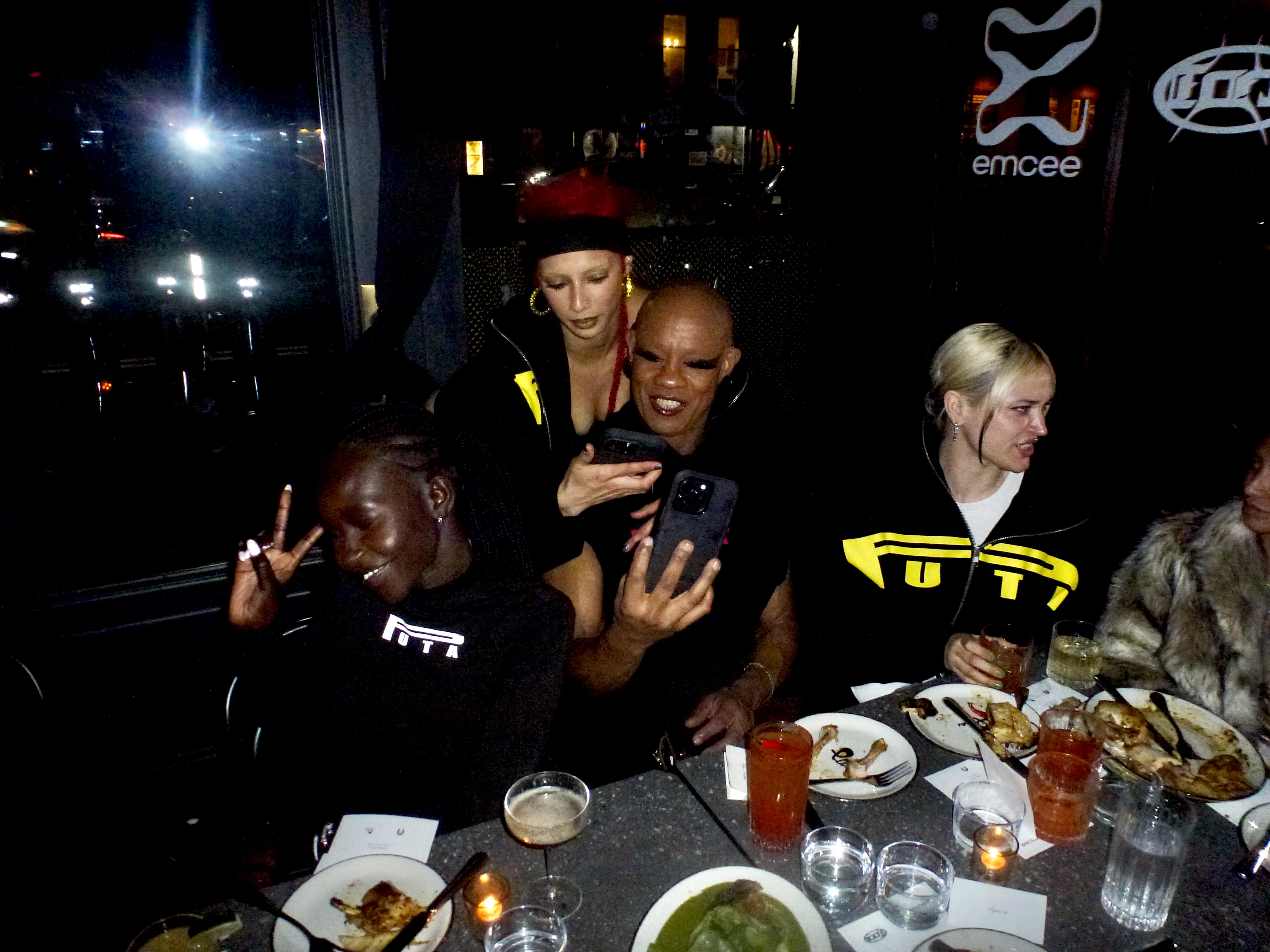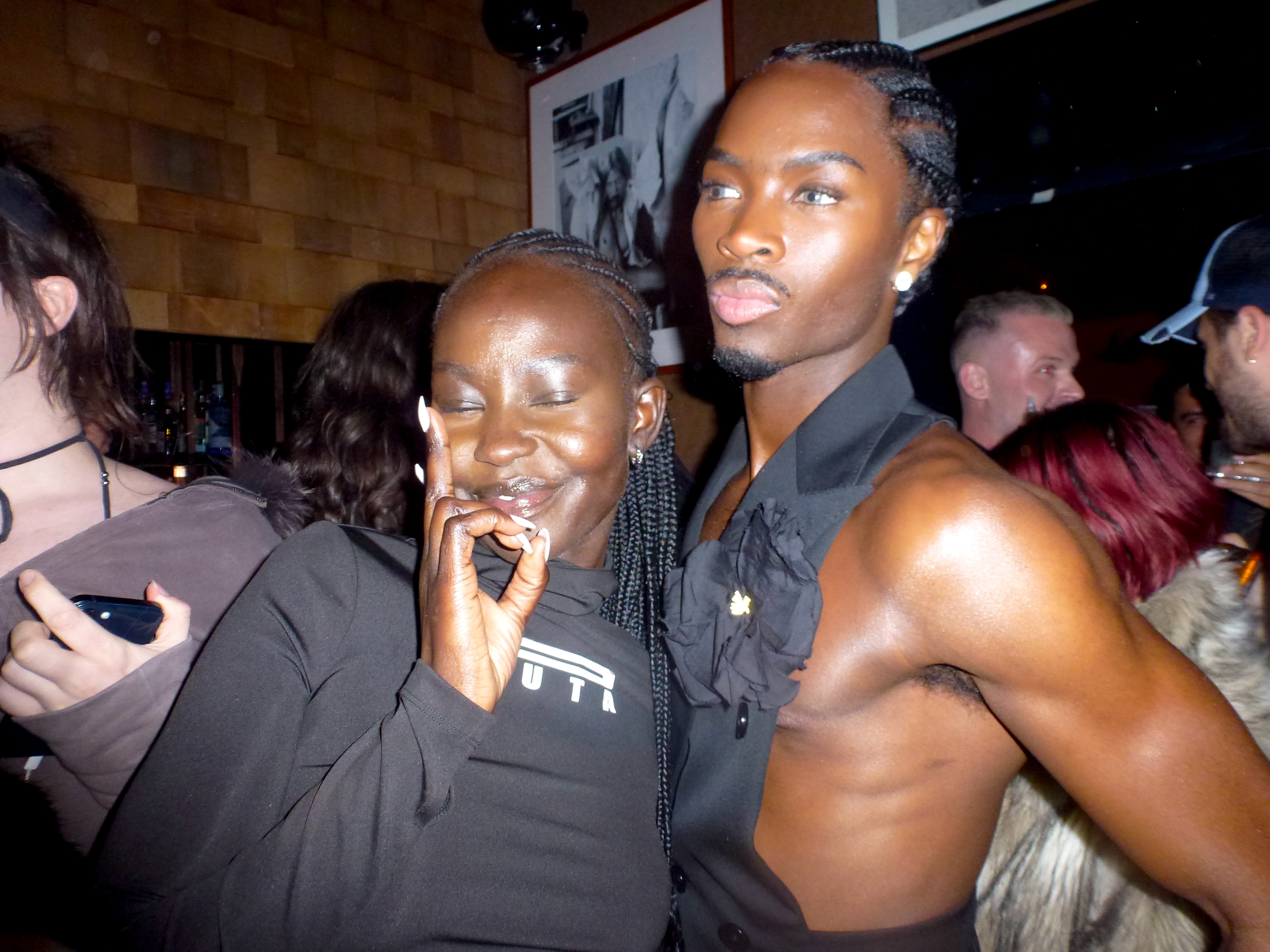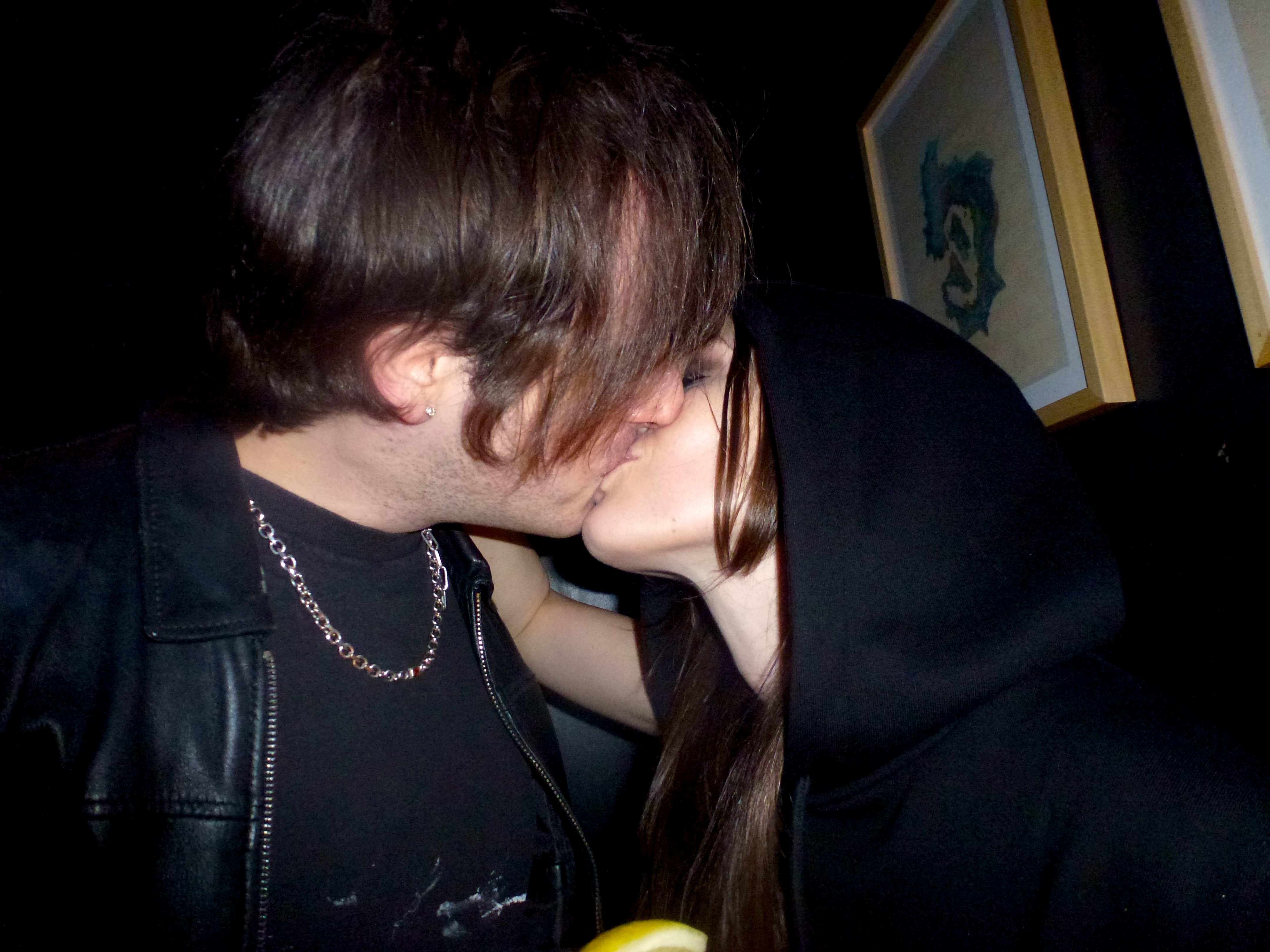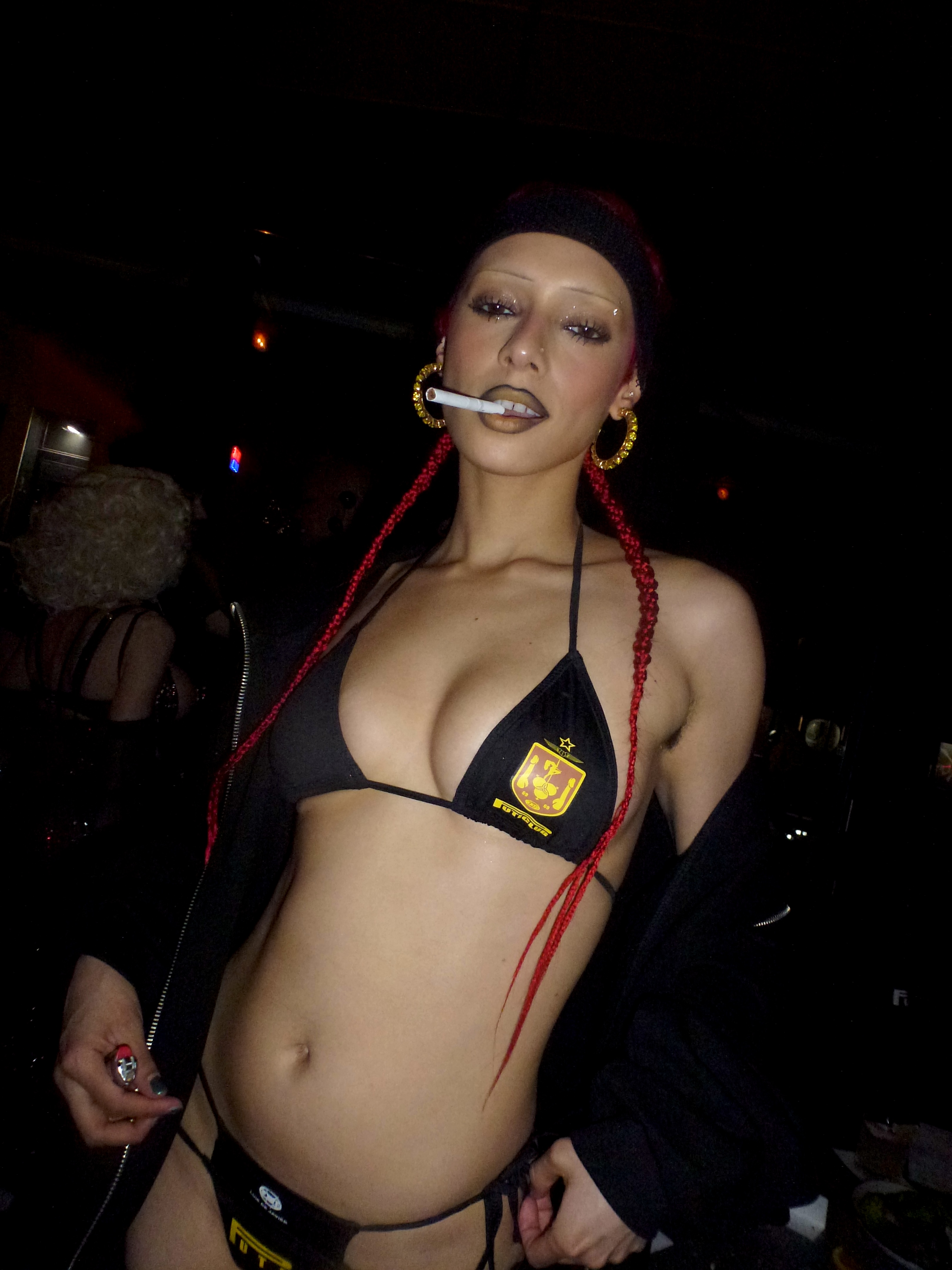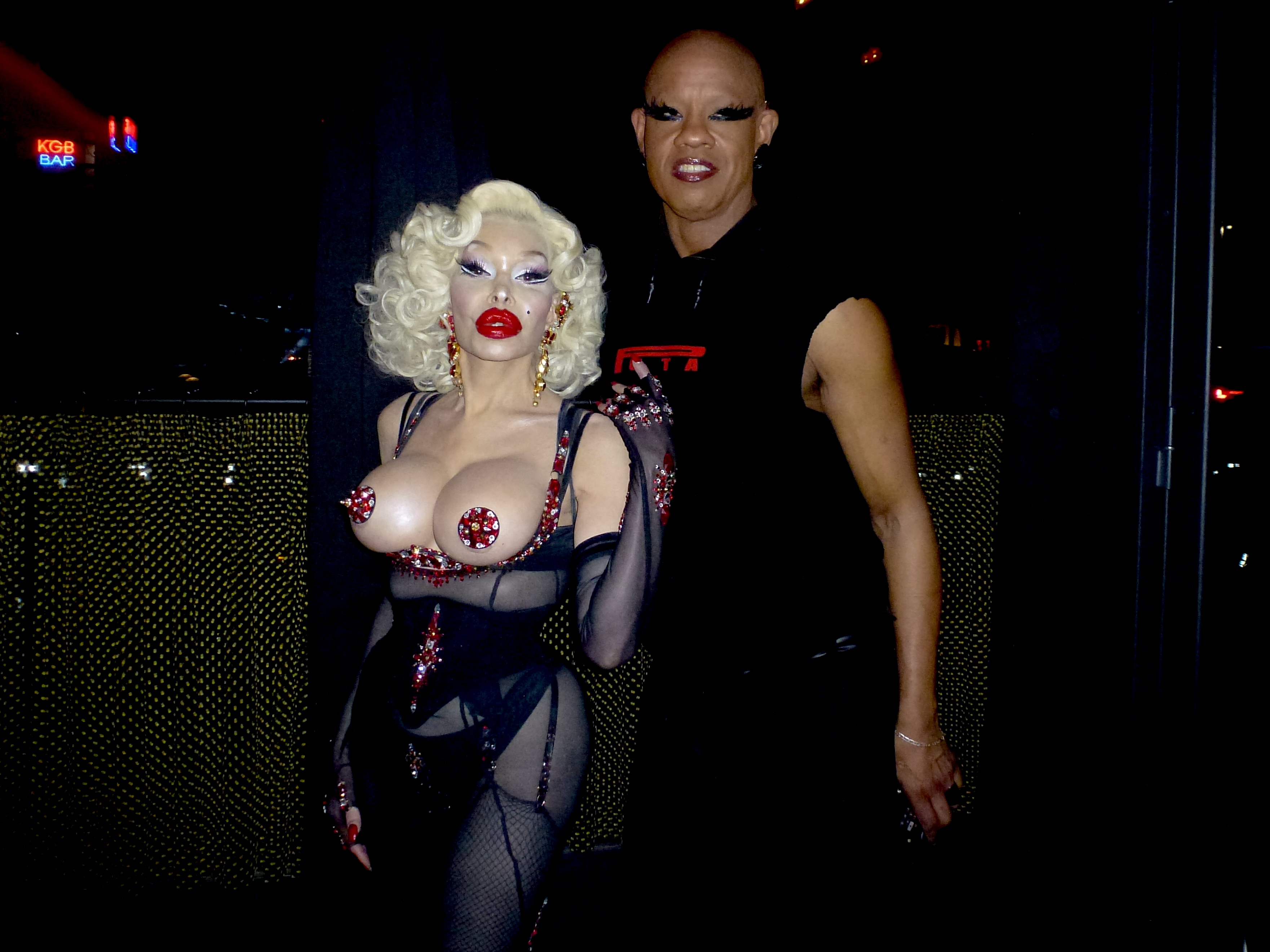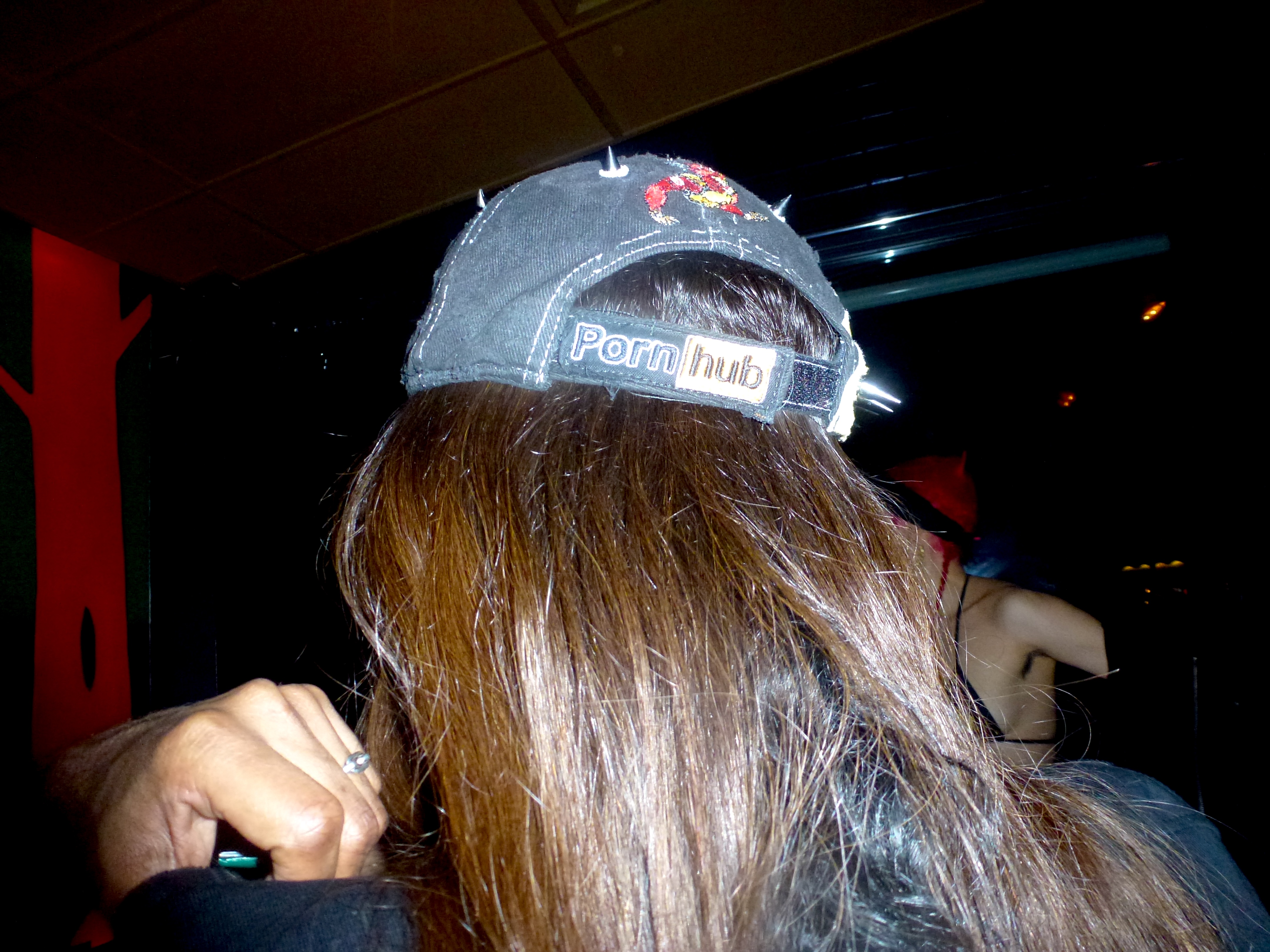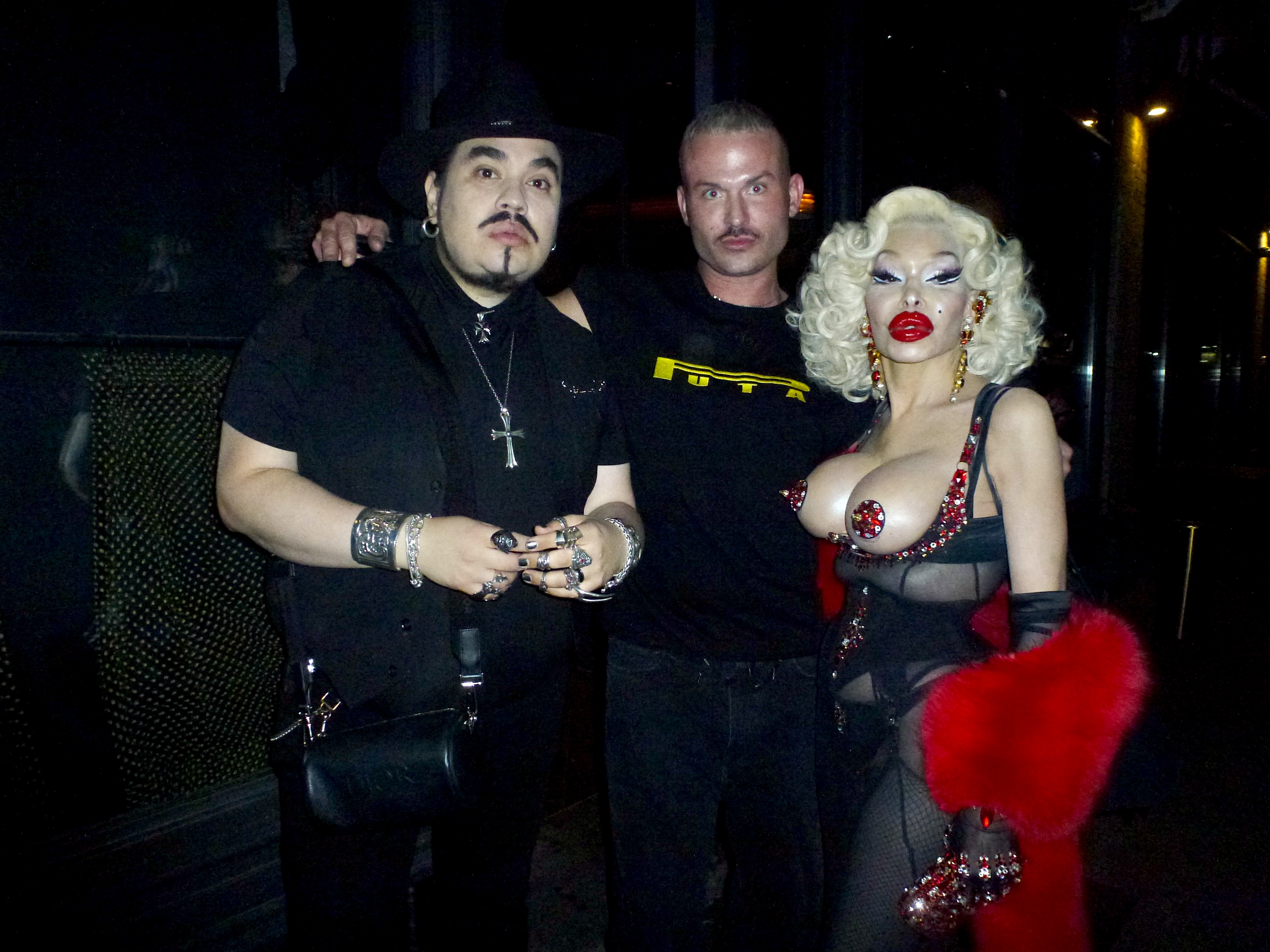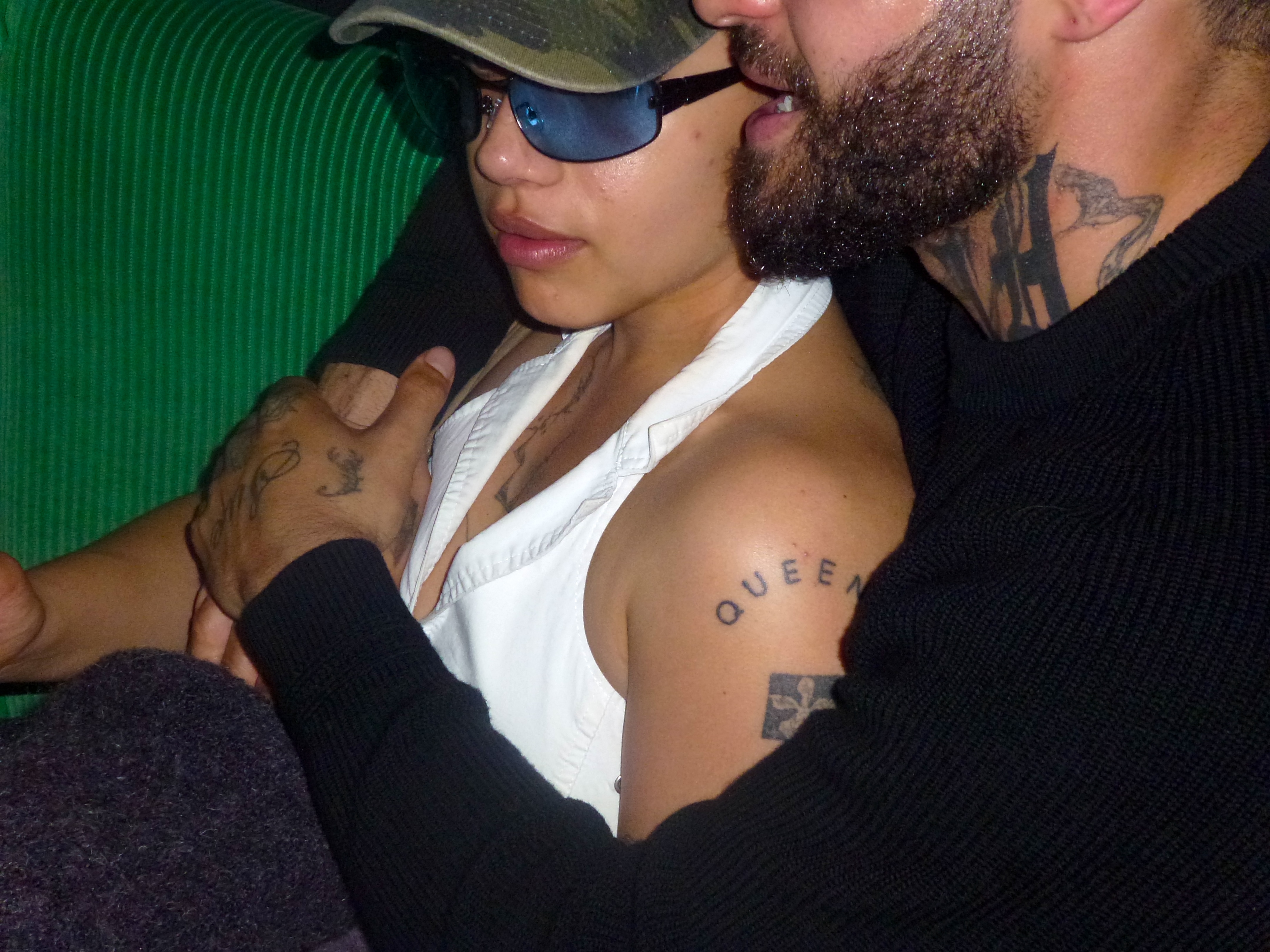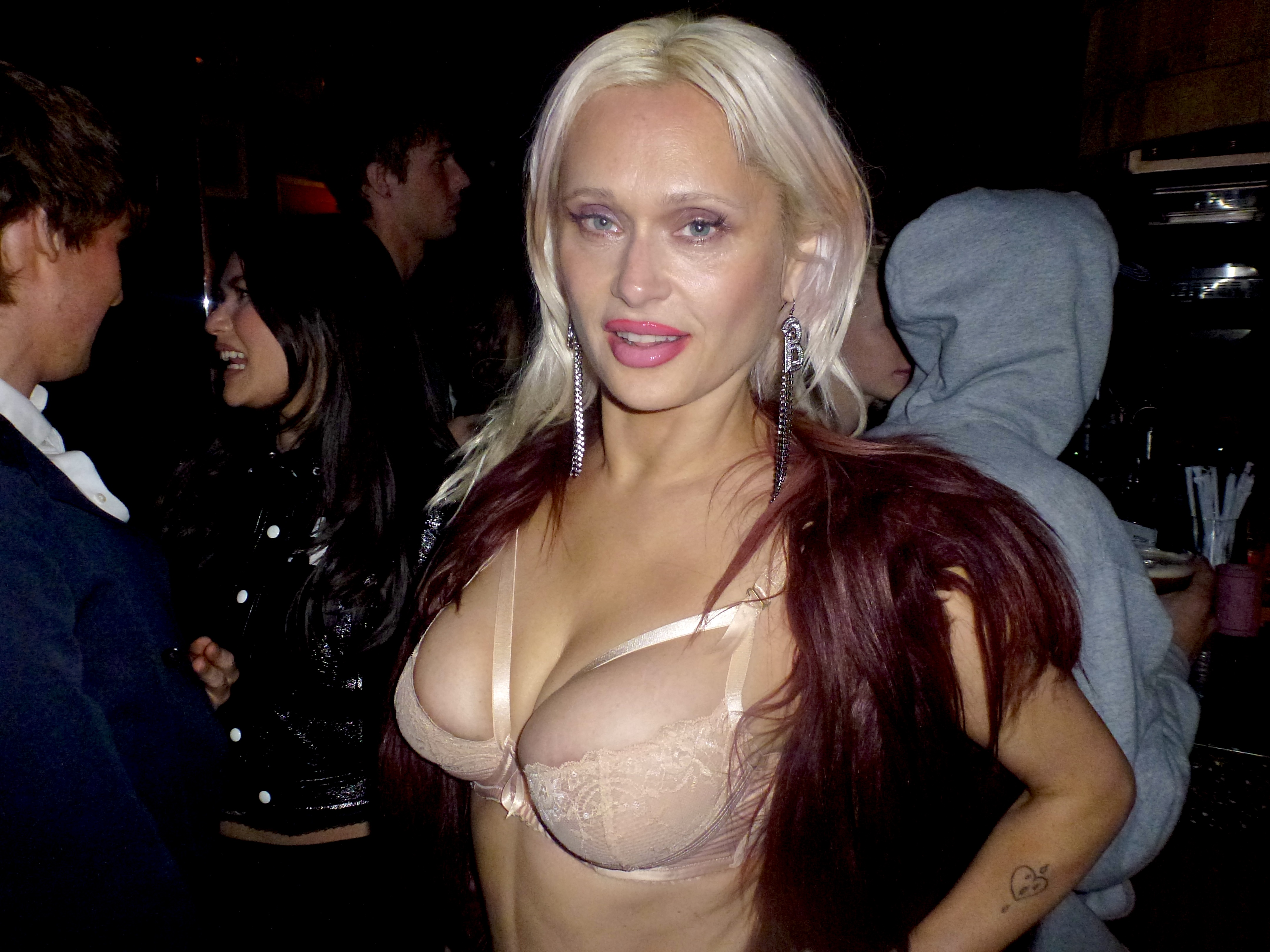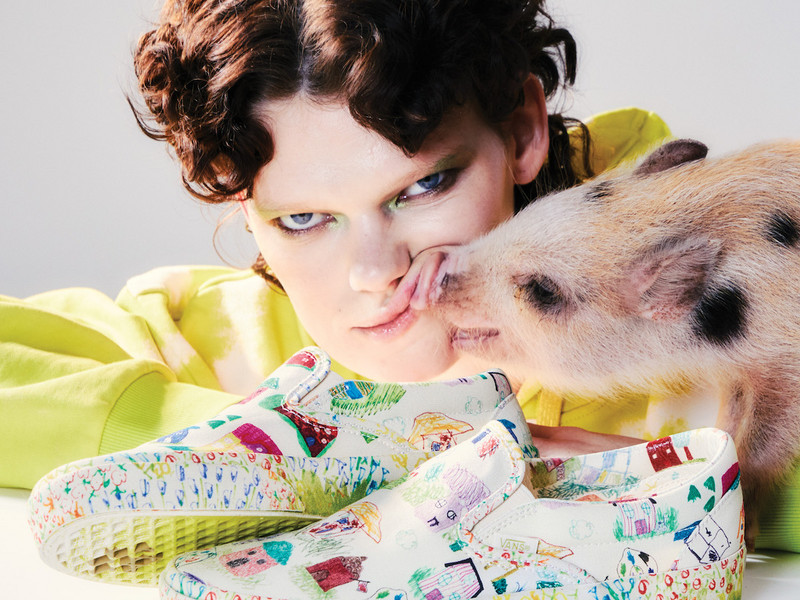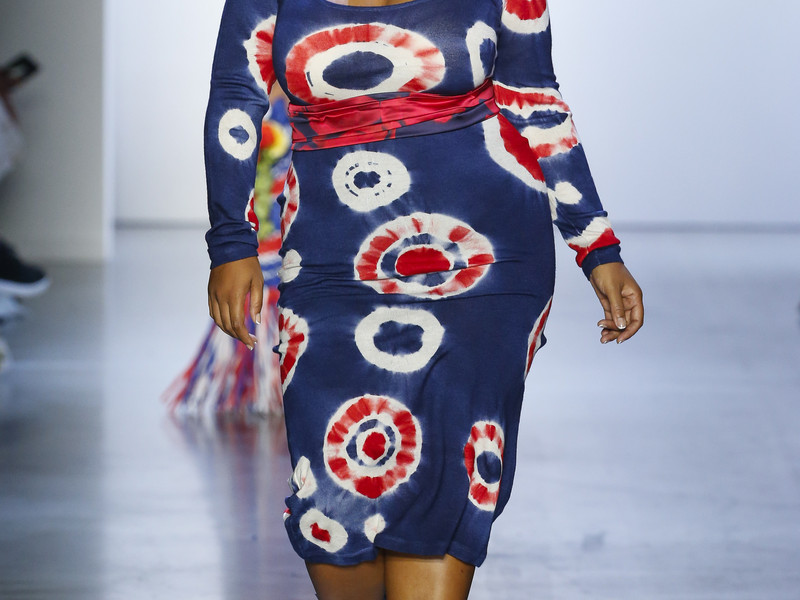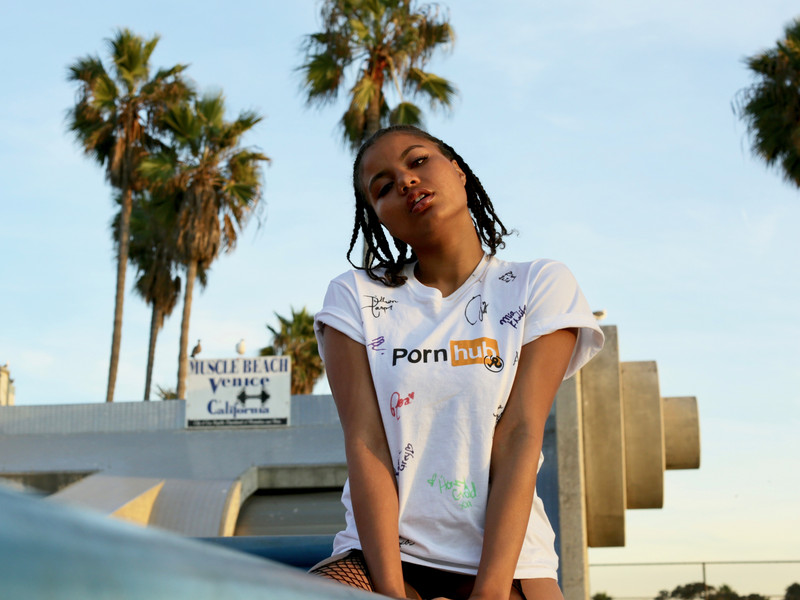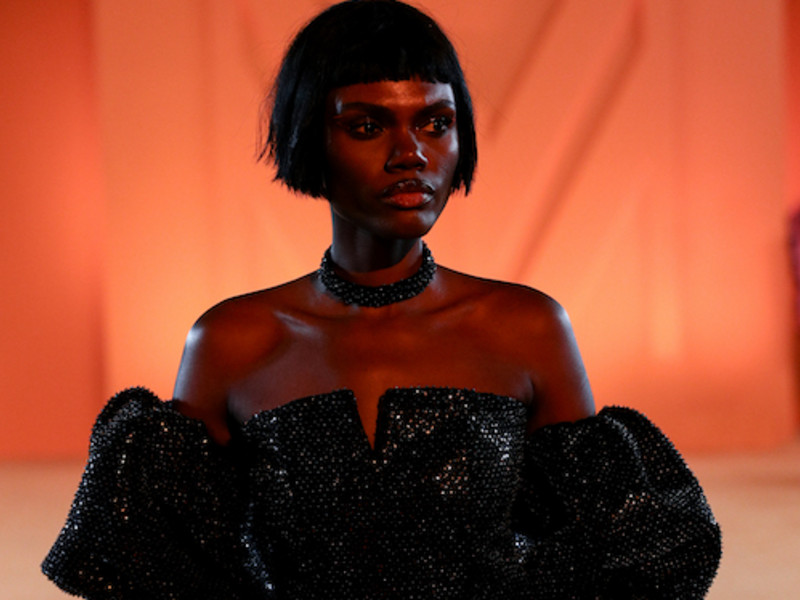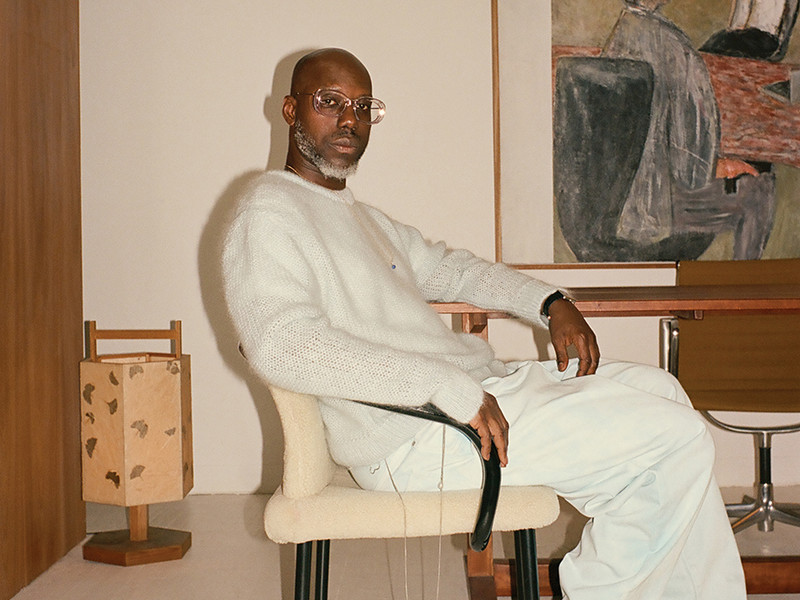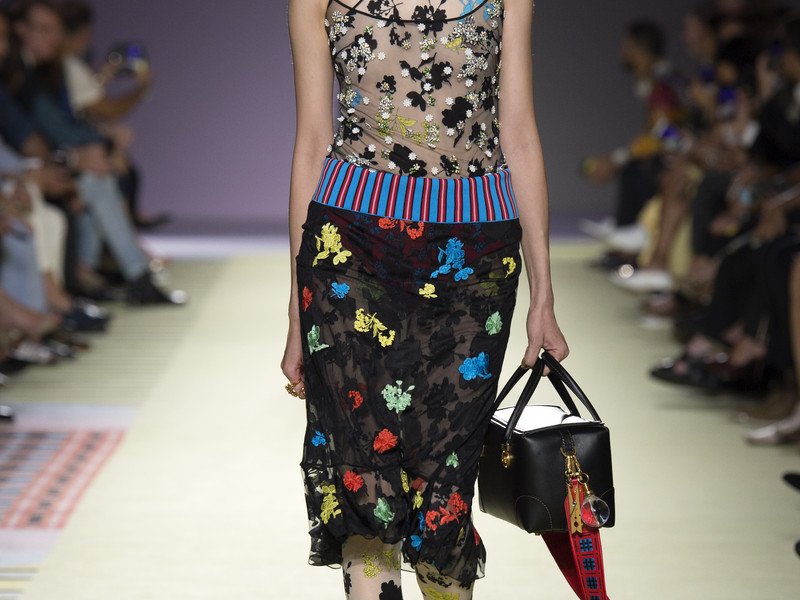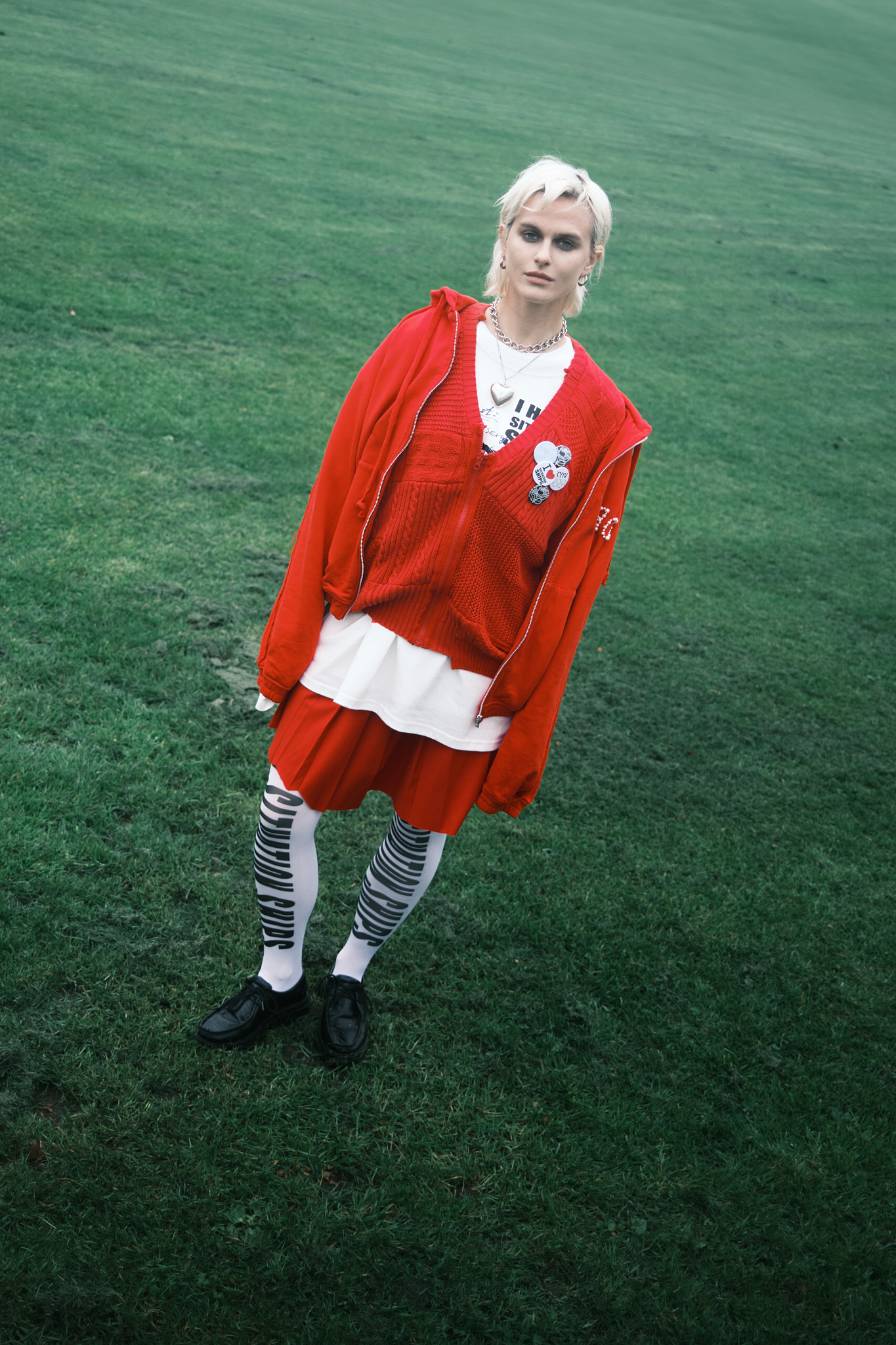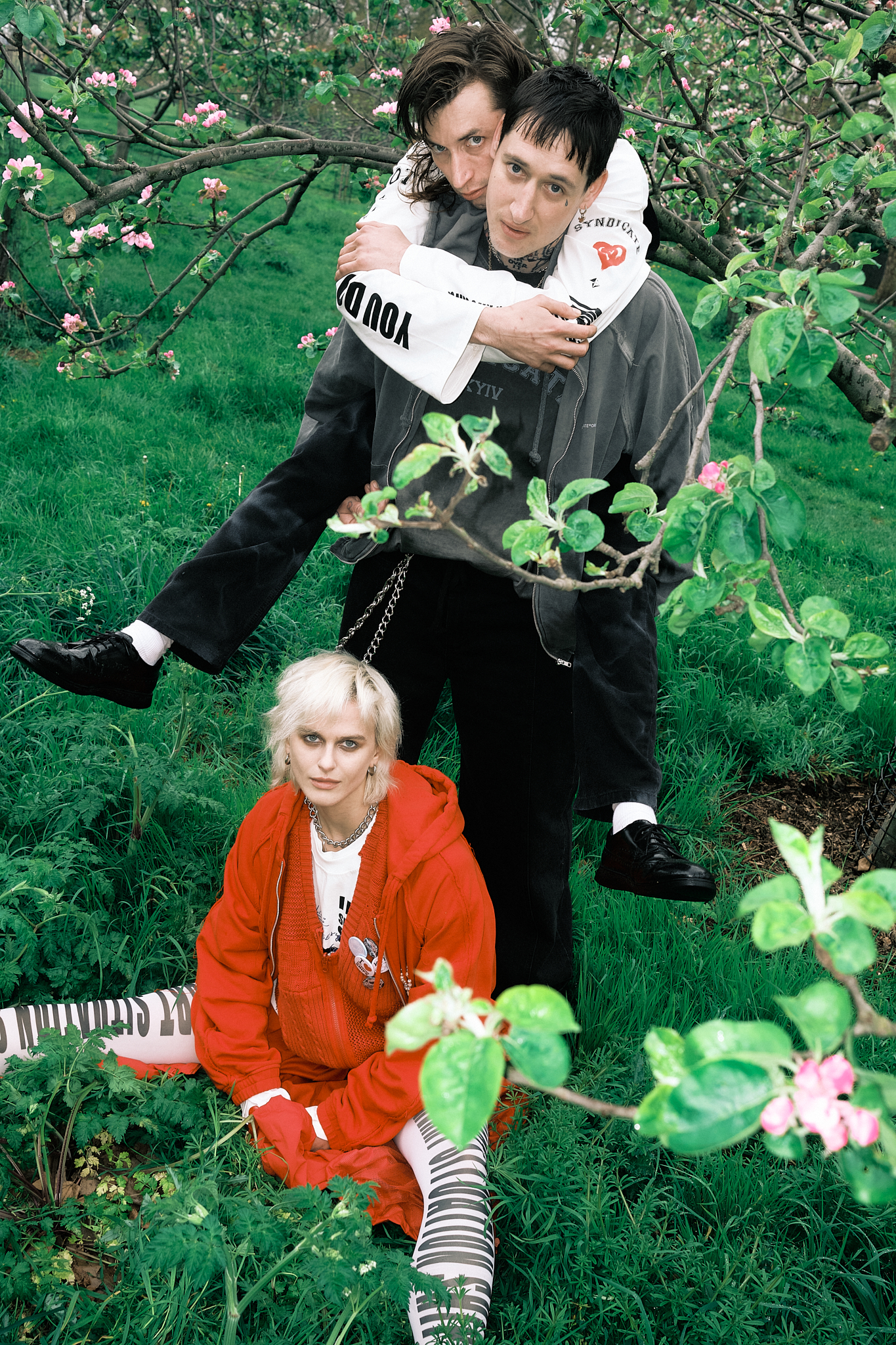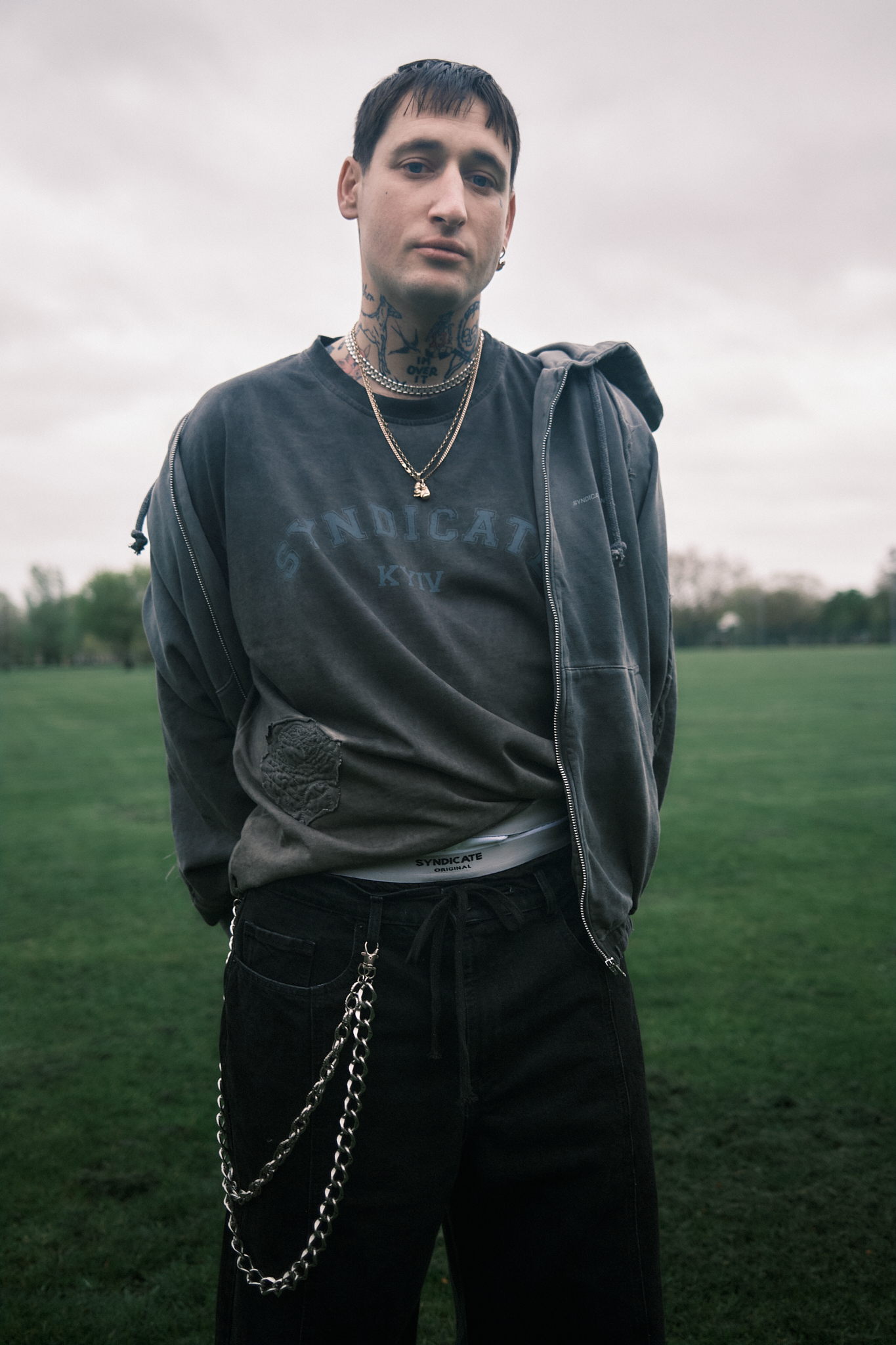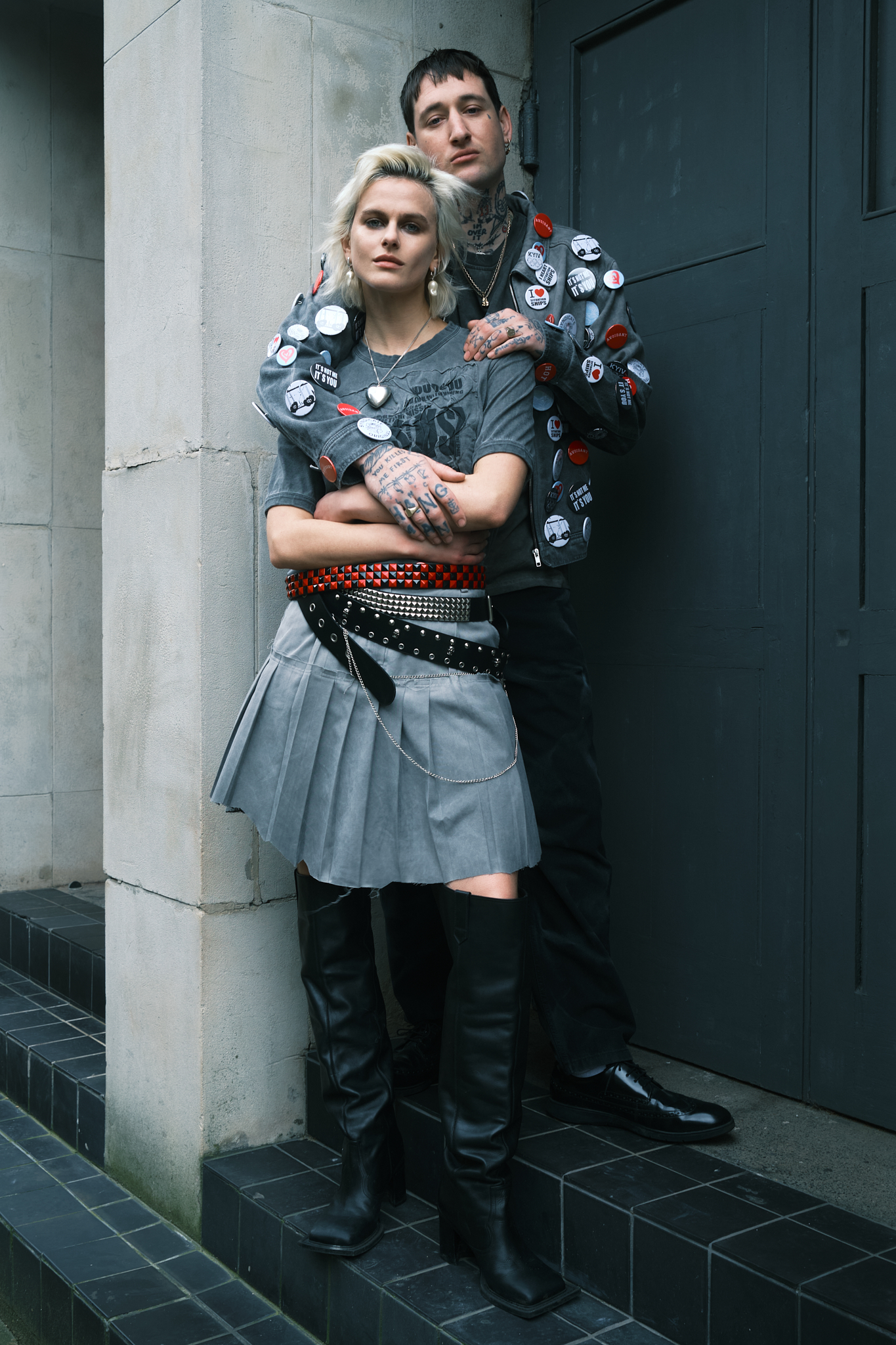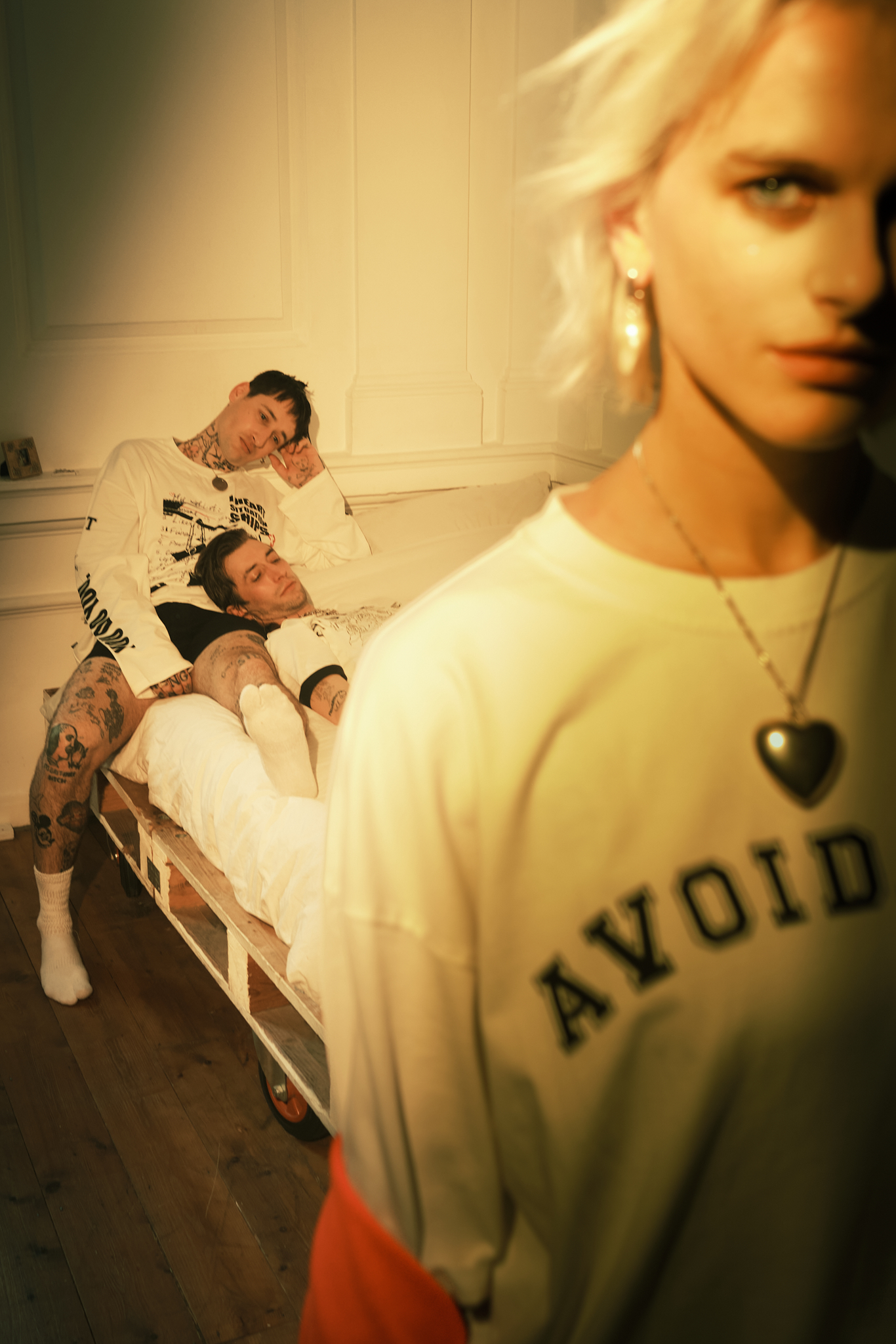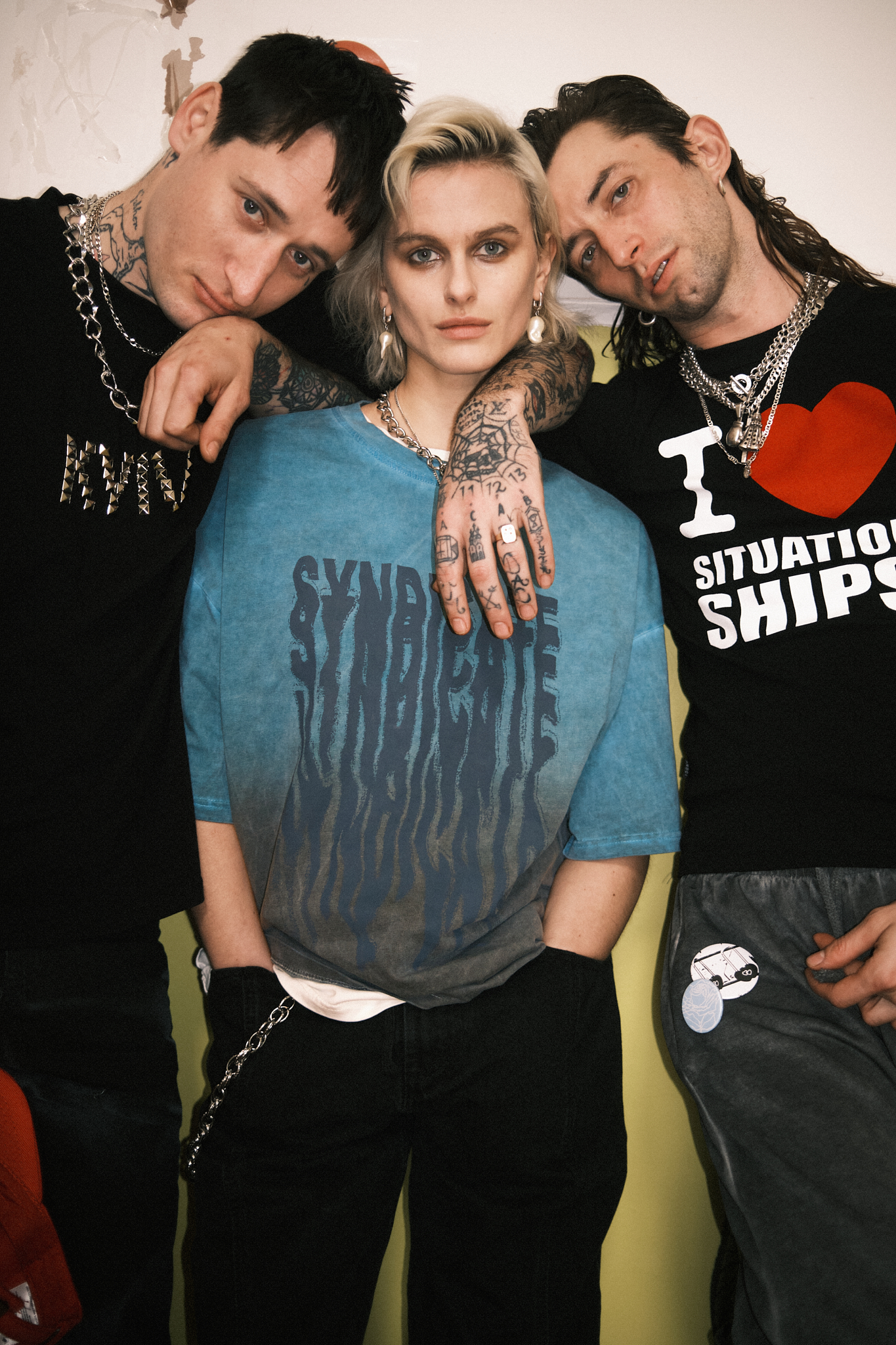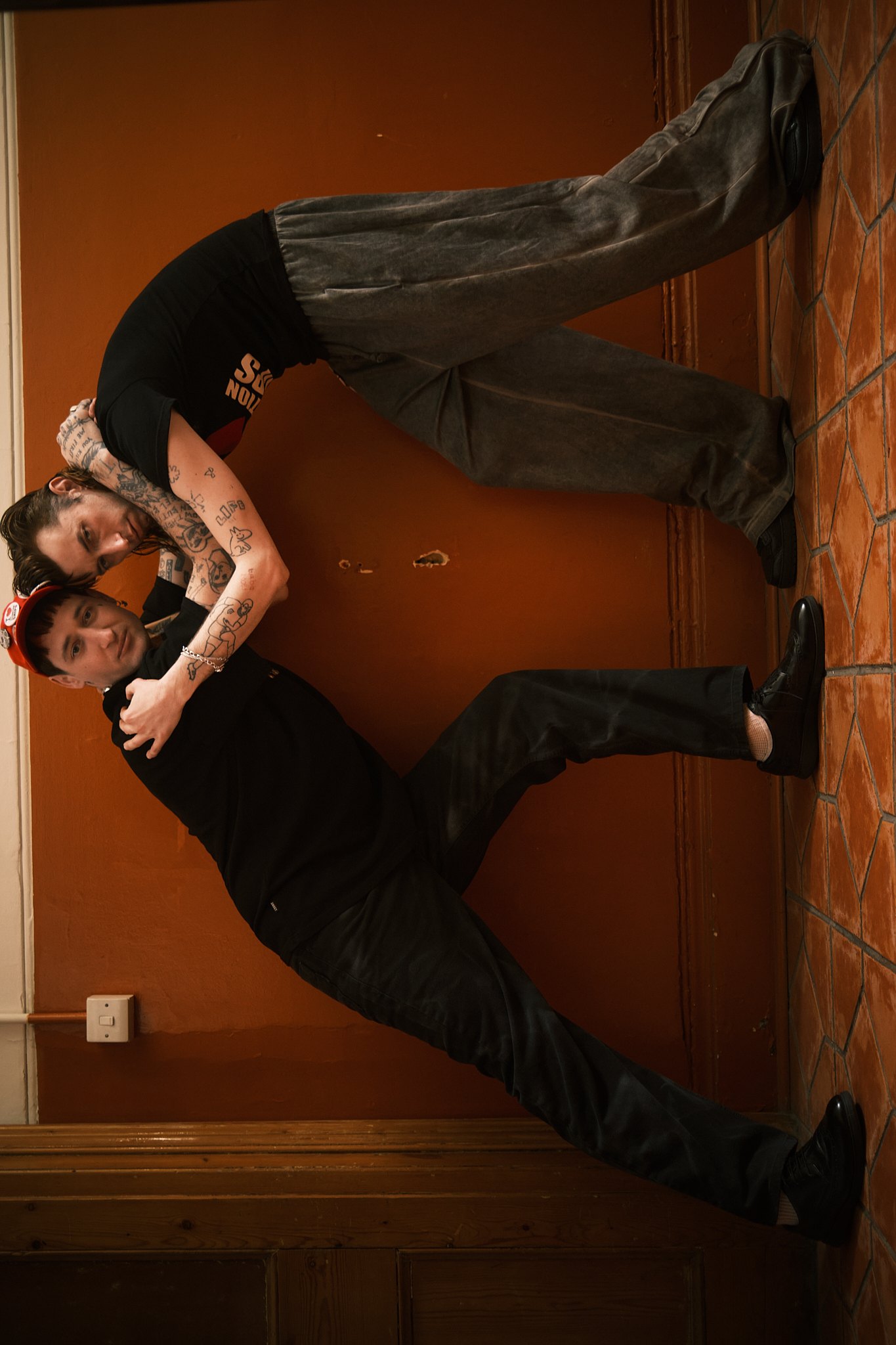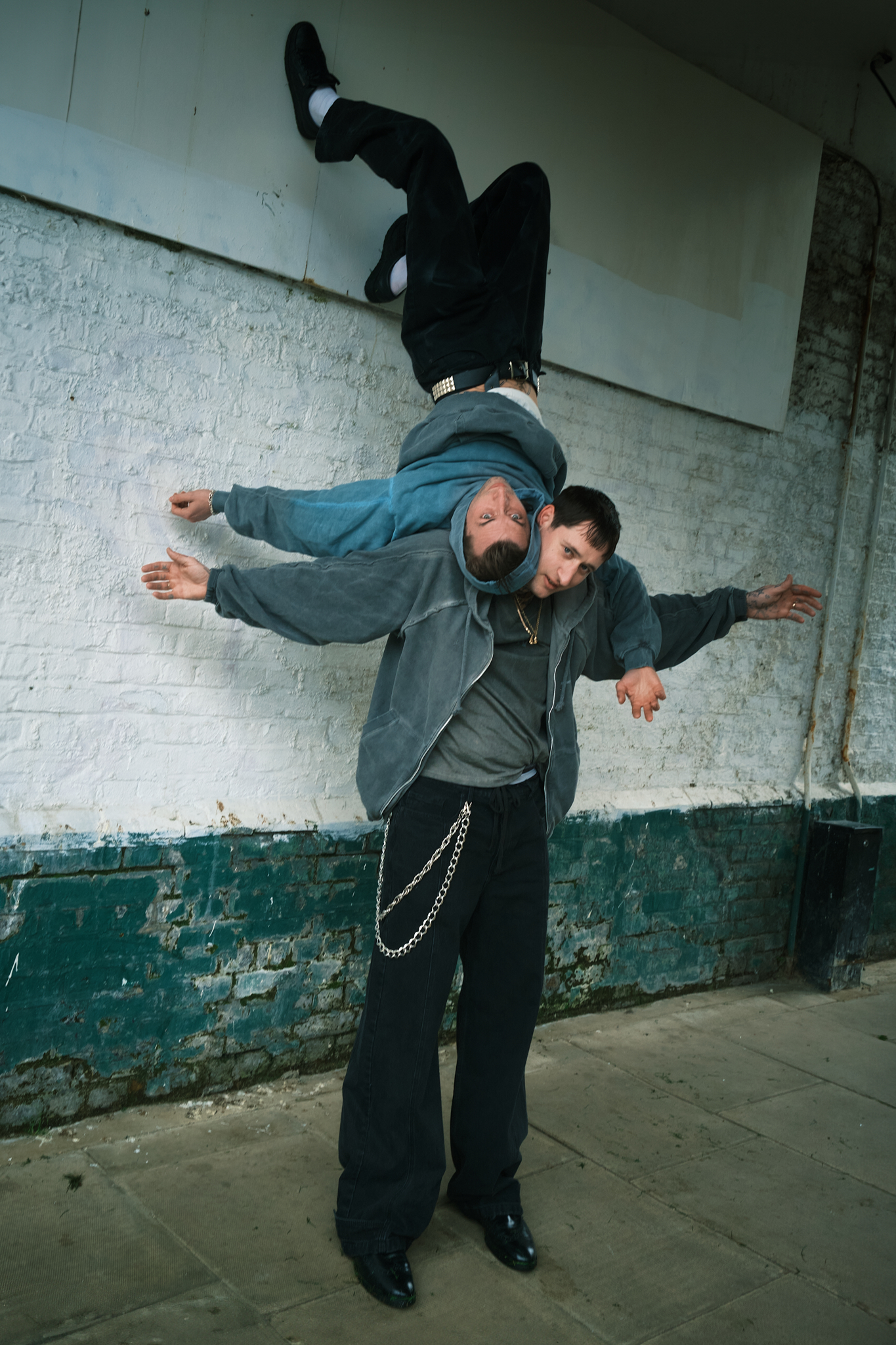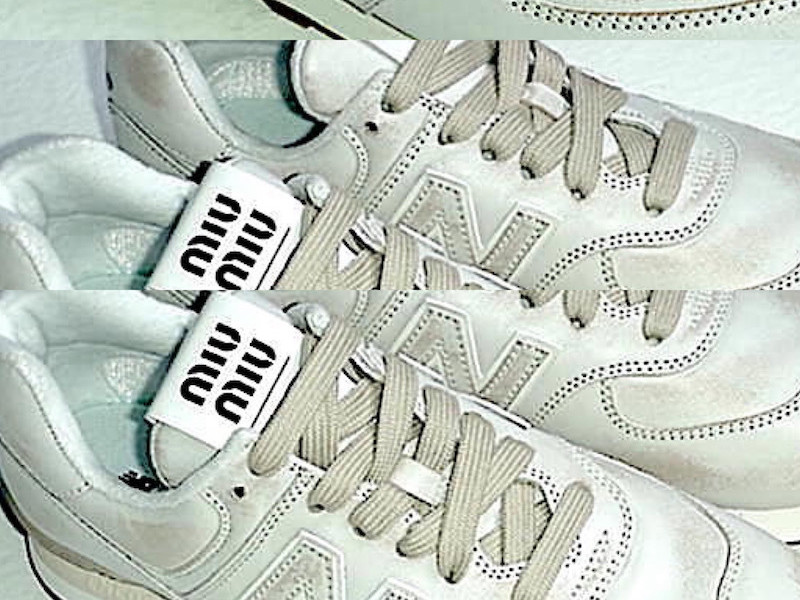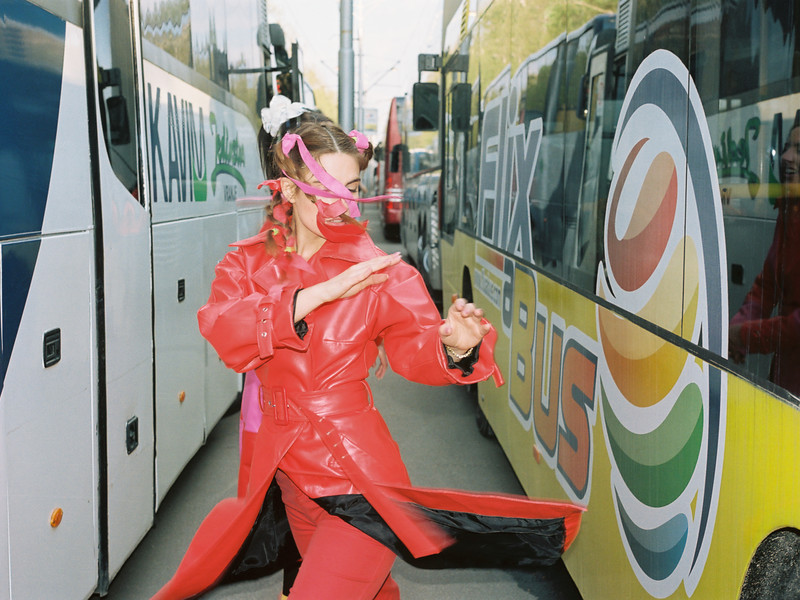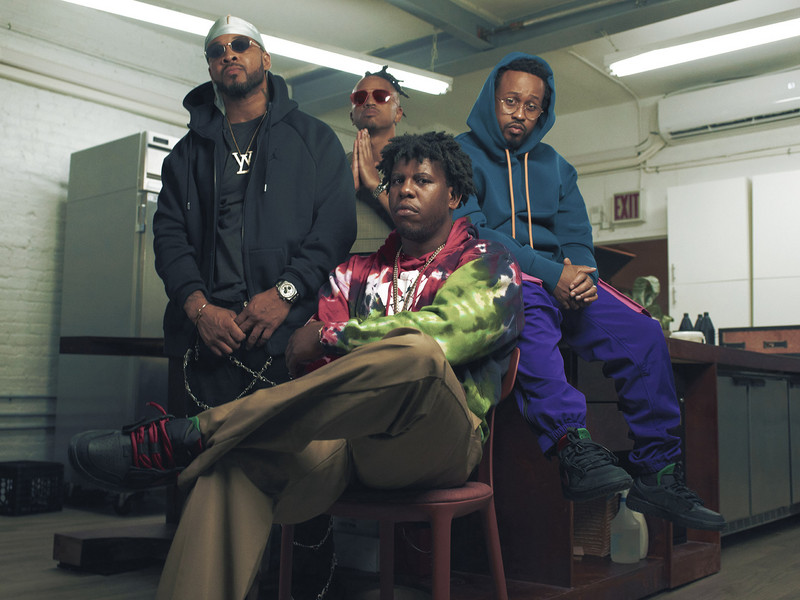Sabrina Ol Looks Within
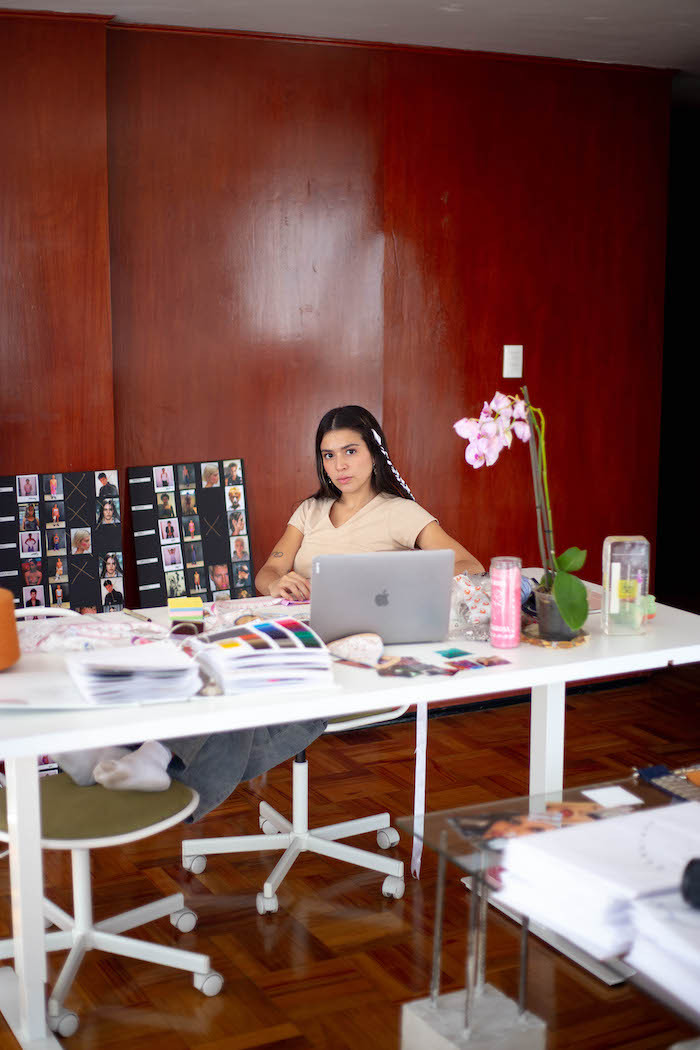
Inspired by the ficheras of the 50s — women who sought sexual liberation through exotic dance and sex work — the collection includes dainty lace accents, barely-there tops, and lingerie-inspired tailoring. These feminine accents pay homage to the unapologetically bold women who came before her, who were later forgotten by history and written off due to the inescapable process of aging. These pieces stand in as physical representations of yearning and celebrate a fulfillment that does not come from external sources, but rather from the self.
office sat down with Sabrina to discuss flipping beauty expectations upside down and empowering not only women, but the wider community of those who share her heritage through her namesake brand.
Your passion for the fashion industry is fed by storytelling. What is the specific story you wanted to tell with the Feromonas collection?
I became very interested in these small pink bottles hanging from some of the stands in Mercado de Sonora, which I found out were pheromones. They’re supposed to work as a substance that makes men desire you.
I feel as though the popularity of all of these love solutions (such as the “feromonas drops”) in Mercado de Sonora, and in Mexico more widely, is connected to society’s unrealistic expectation of youth and the very real objectification of the female body. These conditions drive many adult women to look for alternative methods to regain the attention and love of their partners, often through magical or pseudo-scientific means. When in reality, pheromones are released from our bodies naturally as a chemical reaction; at once as natural as aging, and as magical as falling in love.
My new collection is named Feromonas because it is inspired by the idea of wearing something over your skin that makes you feel desired but without wanting or requiring someone else's approval or love. The sensuality of the pieces in the collection is subtle, as is releasing pheromones, so it was a way of creating a substitute for these solutions and making it more about the wearer's experience and not necessarily an external attraction.
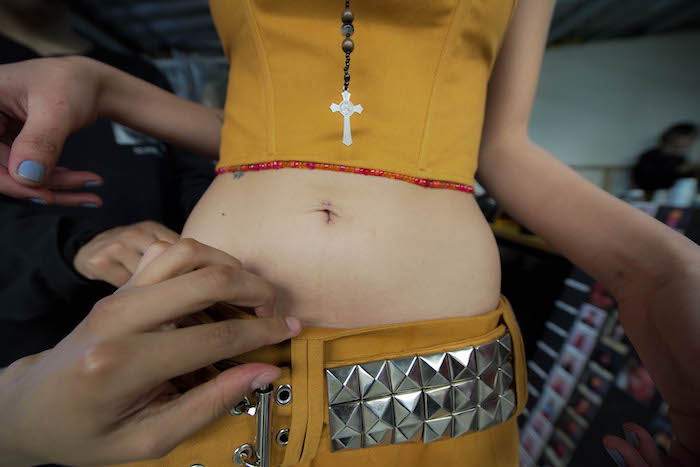
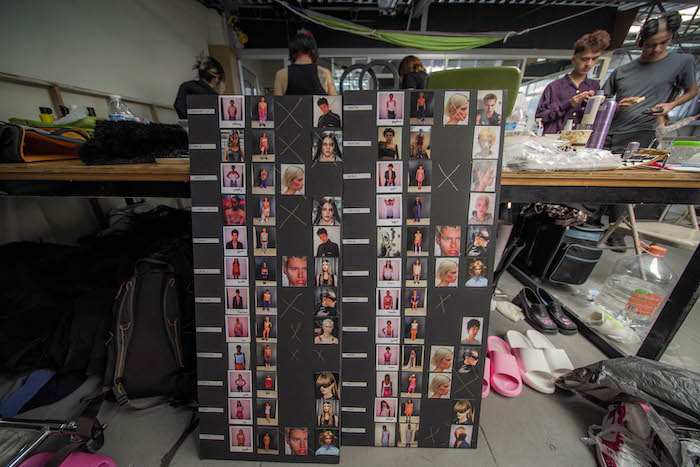
What does "sexy" mean to you?
I think sexy can mean many things. It is definitely feeling comfortable and confident in your body. It is also sexy to say what you need and put limits, and get out of your comfort zone. I think that is why I perceived the presentations and collections as sexy because the whole show was really showing everyone’s self and feeling a lot of vulnerability, but I think that’s hot!
Why is it important to defy the heteronormative standards placed upon displaying our sexuality through the visual arts, design, and a collection like this one?
Now more than ever it’s important to redefine our ideas of how people should look, think, and what we should wear. There are so many shades and possibilities in the visual arts that it's almost impossible not to challenge them. The whole show was really an opportunity to create a utopia where people moved freely and sensually; you entered this structure that felt like a part of another ecosystem. It had different perception levels, using different cameras around the space that forced spectators to look at the show from different angles, simulating the idea of how we should see and experience the world around us. It touched upon sex, love, betrayal, social media, jealousy, and so many more things. Thinking about this utopian reality helps redefine and transform the world.

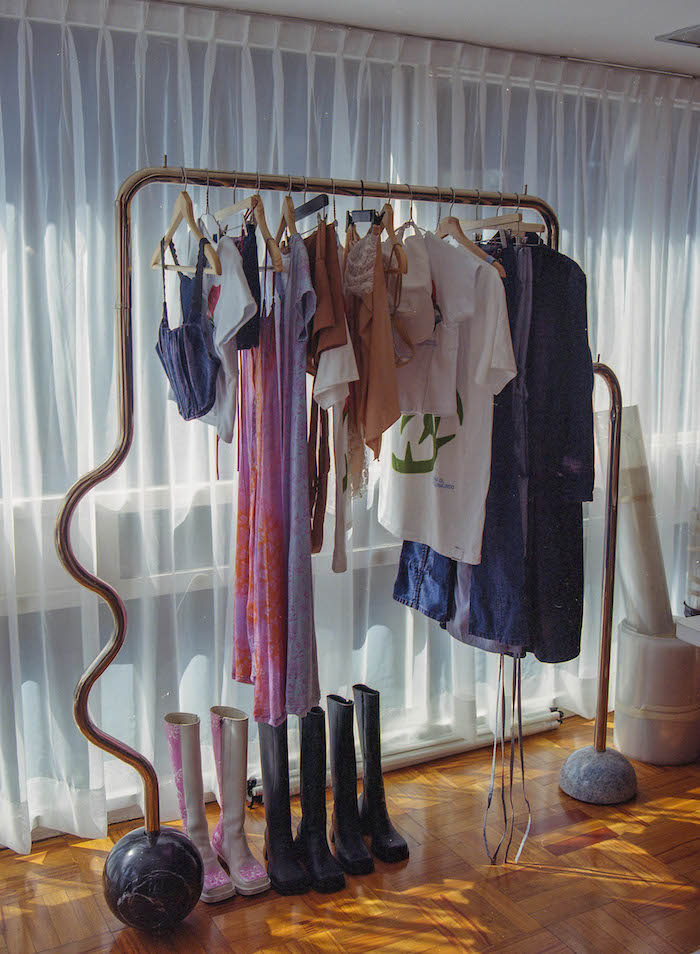
What does it mean to you to be one of the voices shaping the industry in Mexico City and what is the example you'd like to put forth for others who come from your native home?
I am a very young brand and it’s been a challenge in so many ways to build something. I am afraid every five minutes that things aren’t going to work out. I would say to try to take it day by day and not to let your mind take you to the wrong scenario. We are constantly creating our own reality, so to stay strong, to get away from negative people or energies, and not feel let down when things go wrong. Also, I would push people to collaborate more — you would be surprised how much you can learn from others’ practices when working on collaborative projects. You can mix everything — performance, architecture, sound, sculpture, and light. I think it is very important as a designer and artist to learn how to work with people and feed your work with others’ ideas. Also, the more you grow, the more hands you need and it is essential to understand that it's not only you who creates the work, but the people you work with are also an extension of yourself and we should take care of them.
Camila Arroyo, who choreographed the performance, helped to create a narrative that went beyond the clothes. She wrote about the process, “I wanted you to feel like a witness to many stories and relations, and many of the models were real-life friends, so you could really feel like there were different relationships at play. I wanted an other-worldly quality, but at the same time, included gestures with glimpses of pop culture snippets, from the Tiktok choreography of Rosalia's song Despechá, which we performed in hyper-slow motion, to groups of friends taking selfies, and a facial expression that was inspired by the 'la mala de la novela' archetype — the mean girl in a telenovela." The whole thing felt like the show Skins, meets demonic fairies, meets Mexico City. Before our rehearsals and before the show I guided a movement improvisation to really allow us all to connect to each other because we needed that availability and connection to each other to transform the space and bring the clothes to life, and ultimately to create a new world together.
As a Hispanic creator, what does true representation look like to you?
This is a tricky question because for some people it has become more about what the international eye wants from Hispanic creators than what they really are. I think being Hispanic doesn't necessarily have to define your work in a specific folkloric way — for some people, it's more about how they feel, see, fear, or what they desire. I think it can be derogatory when Mexican artists use popular art as inspiration because sometimes it’s not theirs and they are not speaking their truth. They are just thinking of what will sell to tourists. So I think true representation is to look at yourself more and create from there.
Check out exclusive backstage photos from Sabrina’s most recent show, as well as a sneak peek into her Mexico City studio, below.
